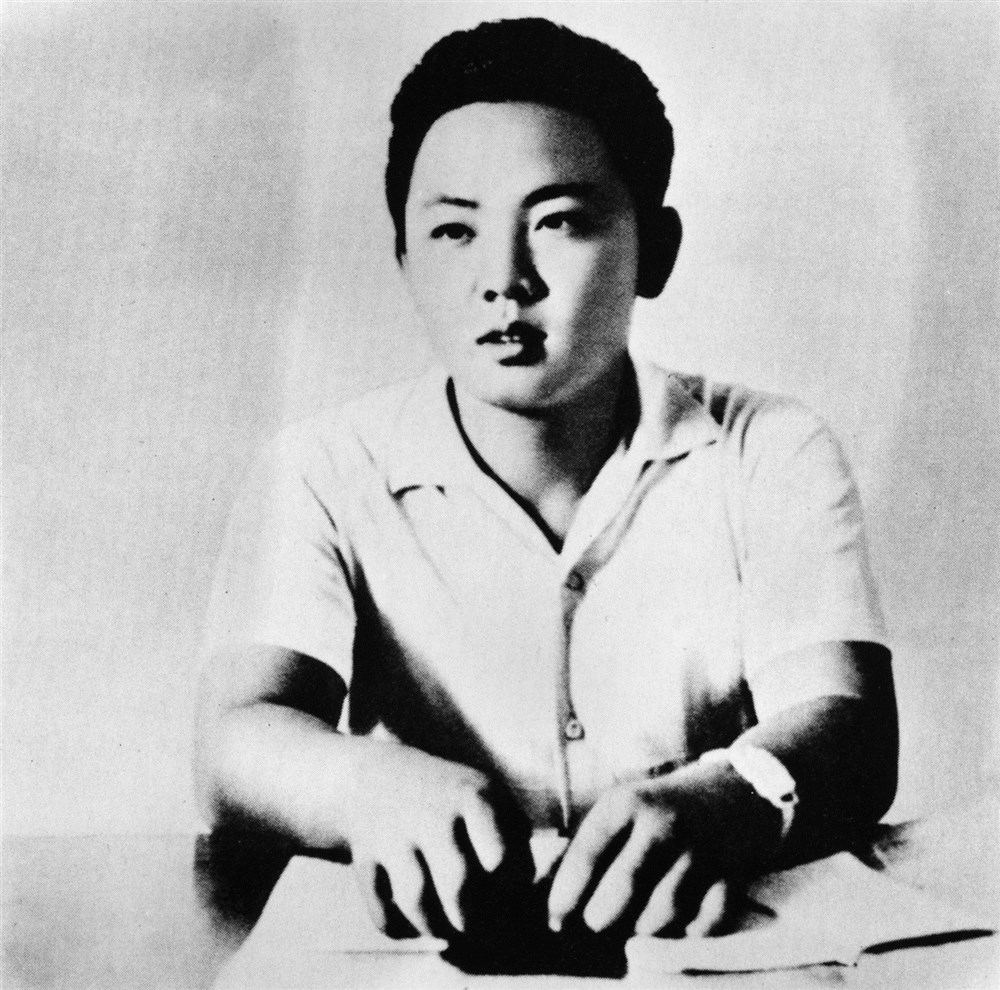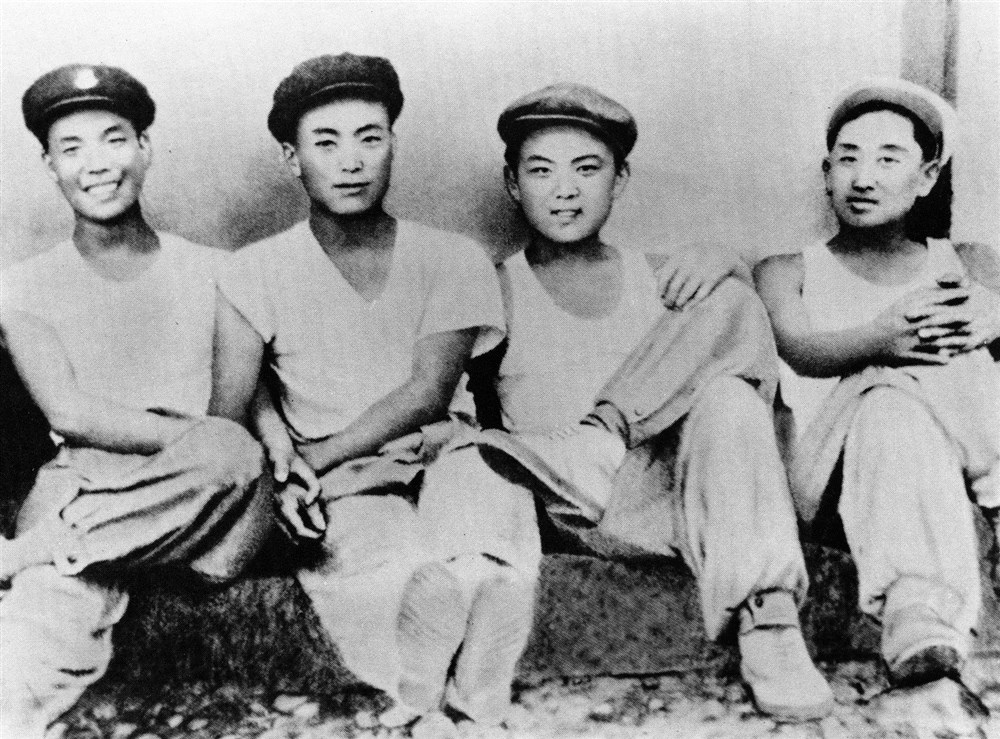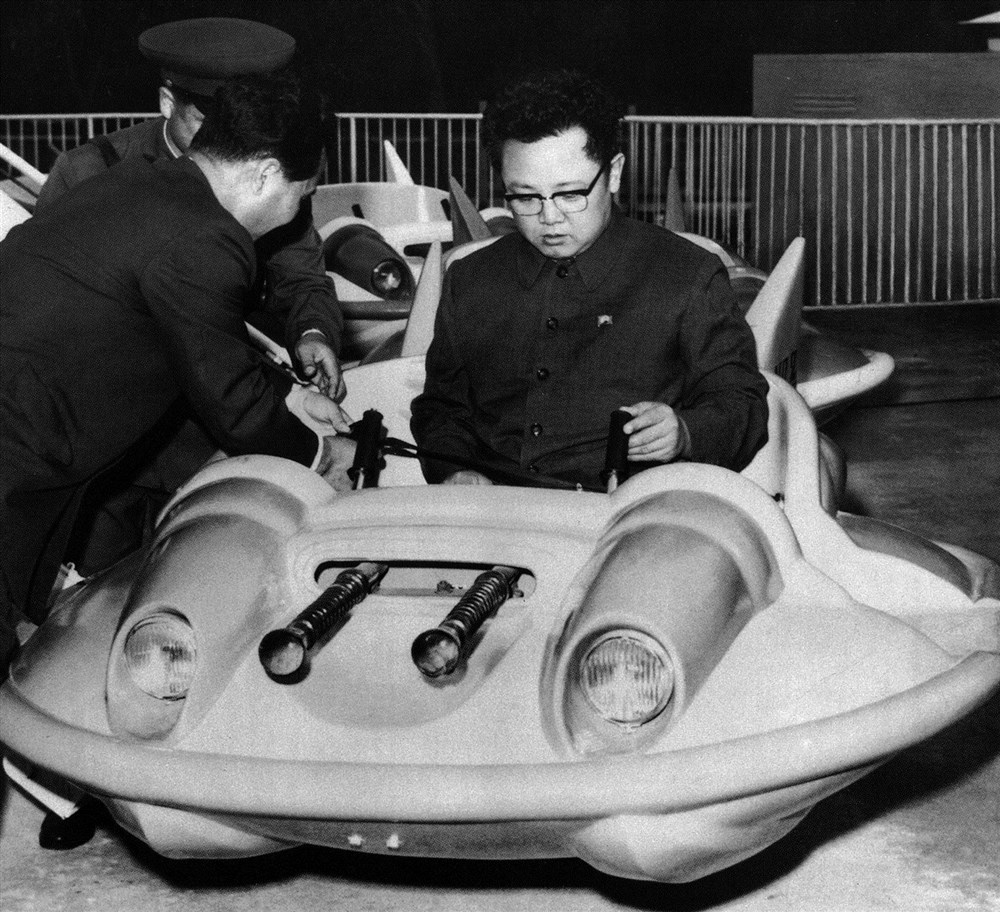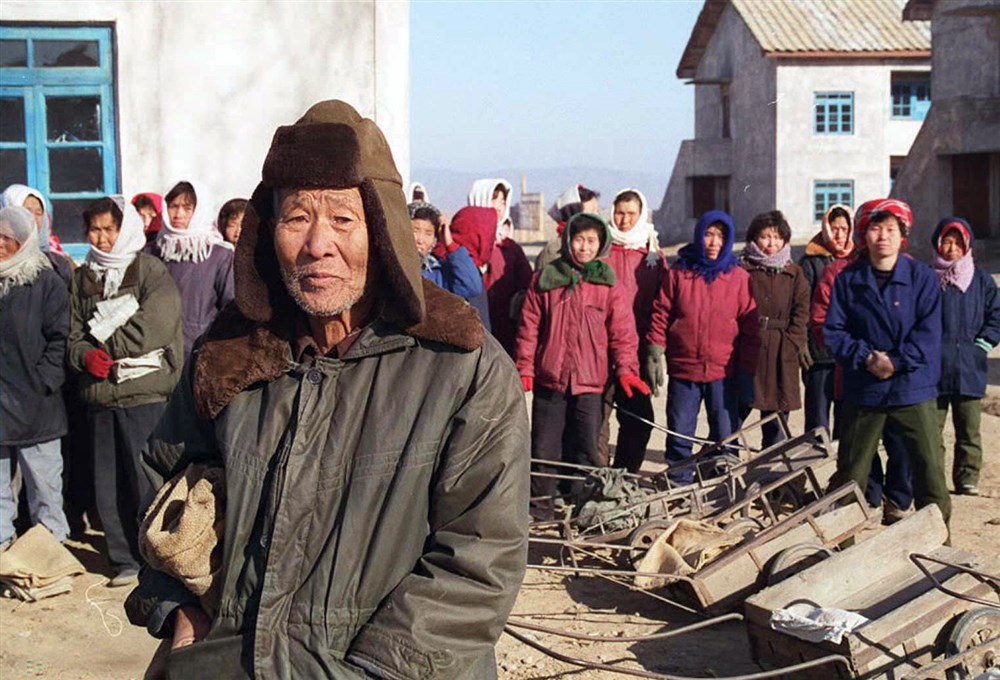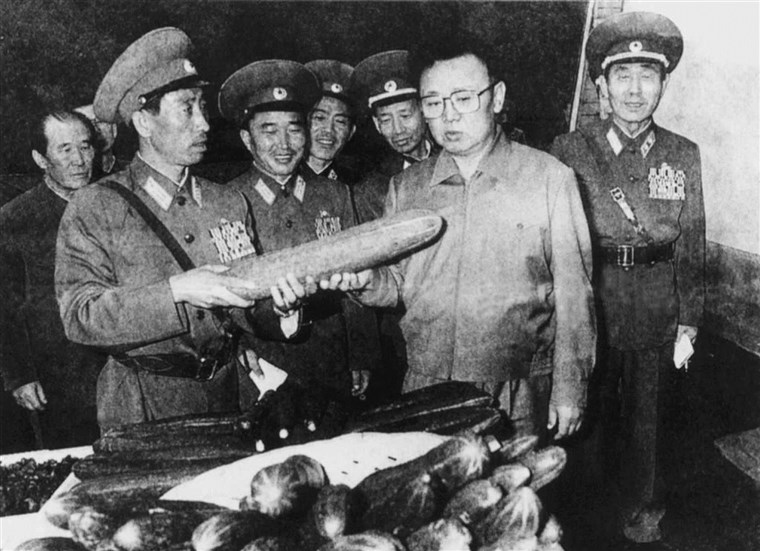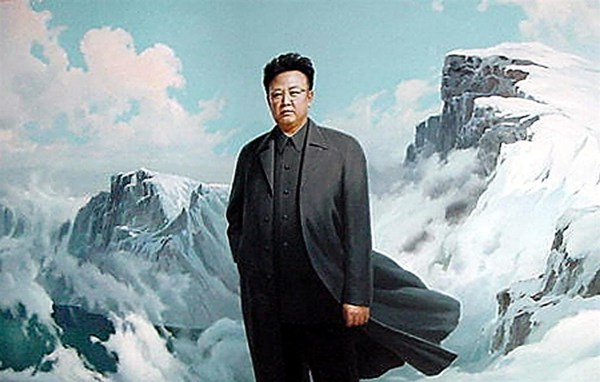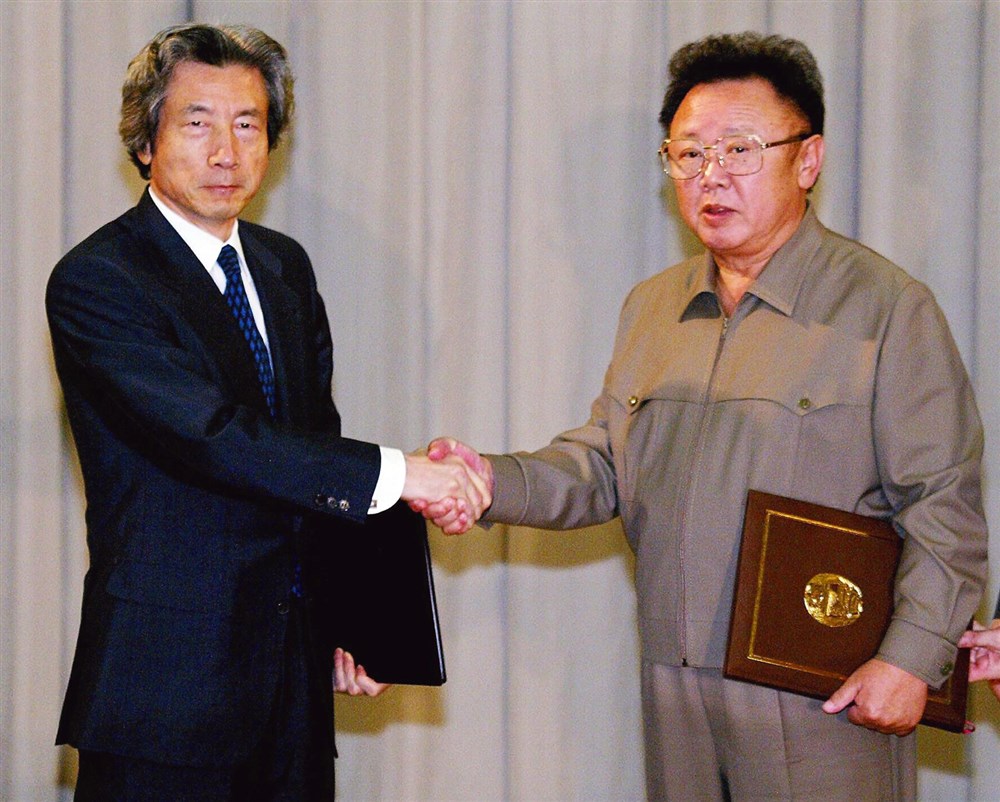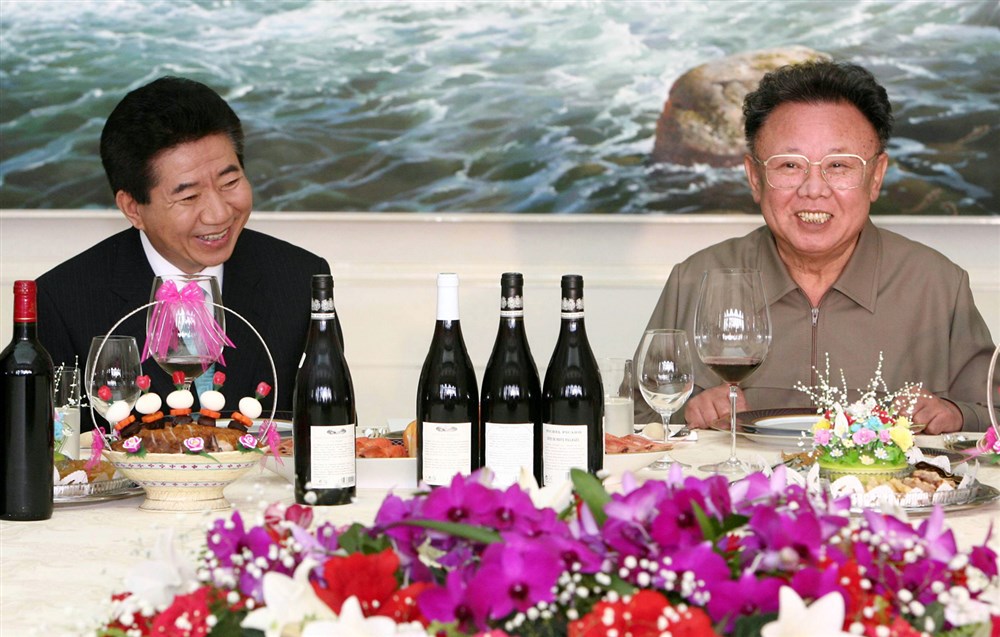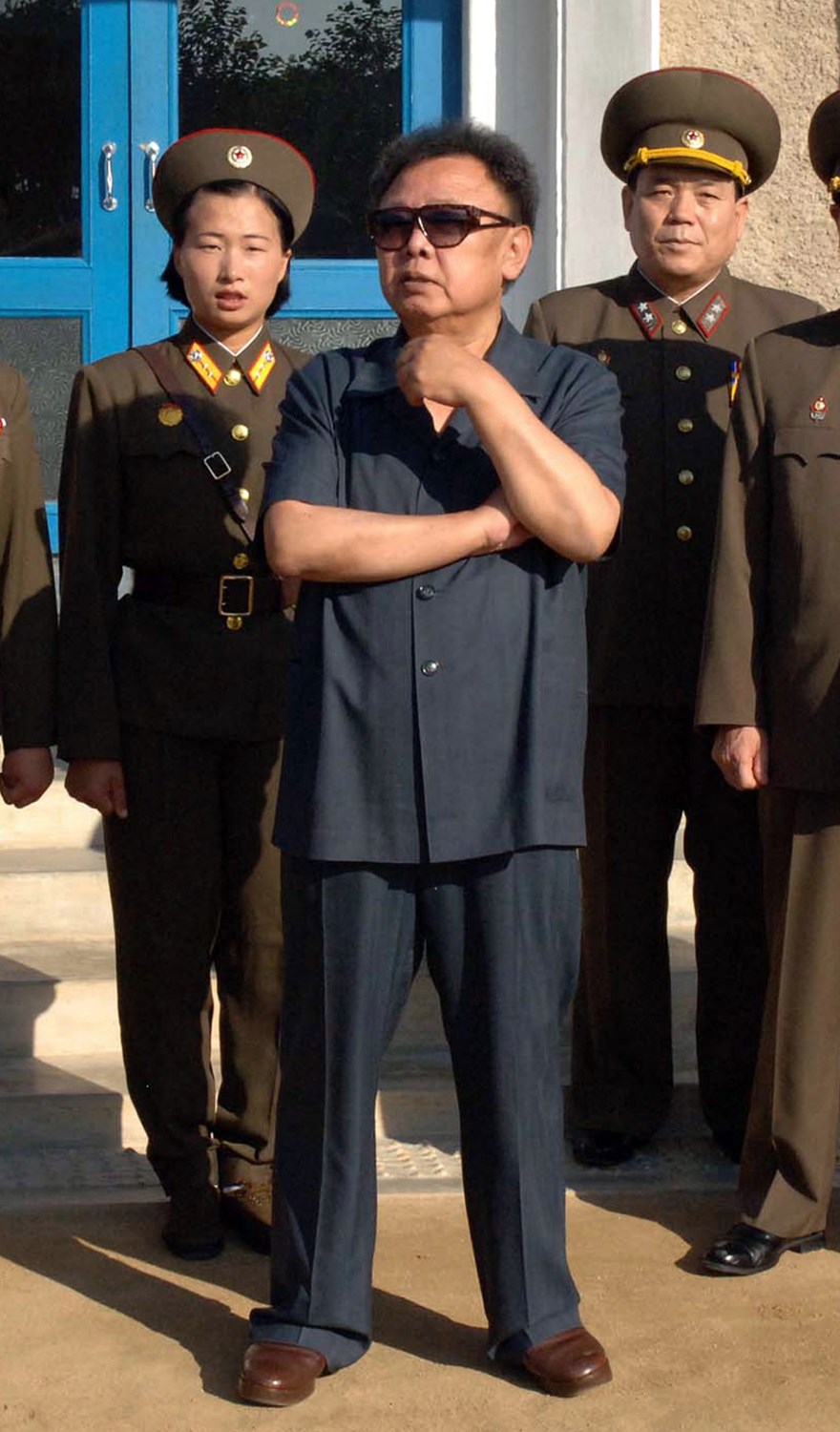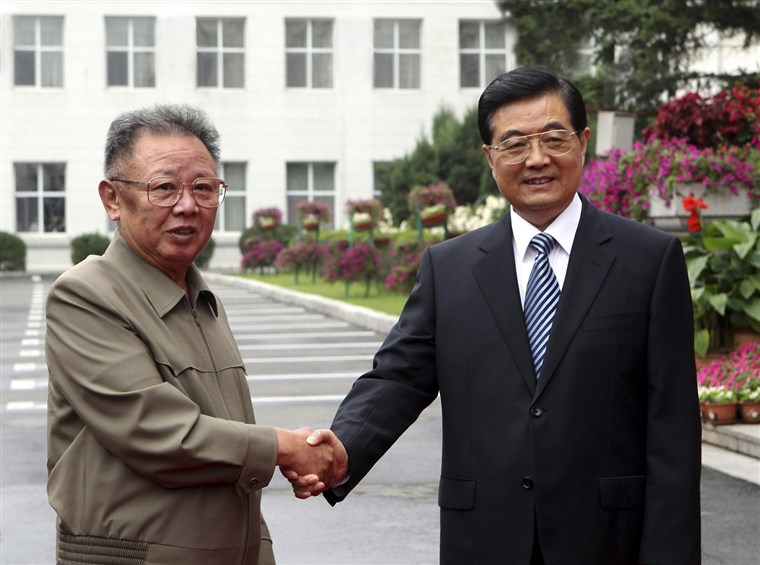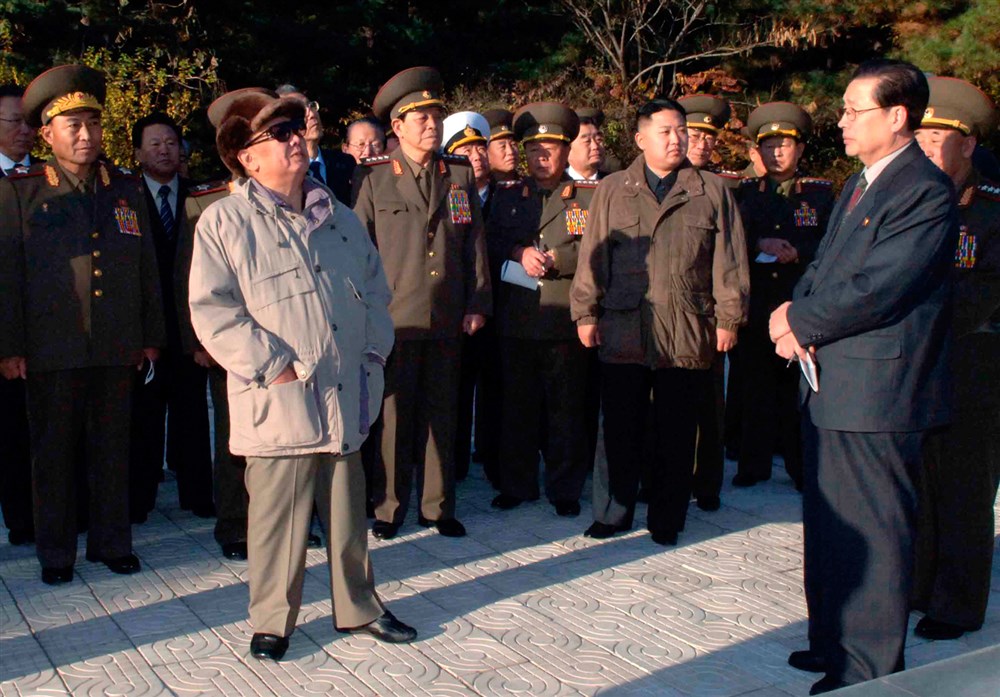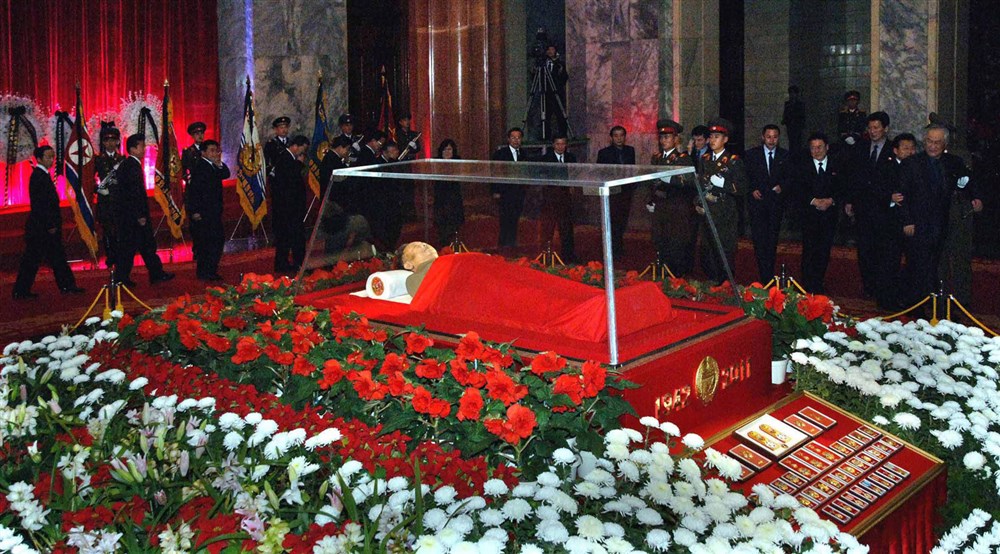North Korea
The worst place on earth
A country with little hope of change
Aug 11th 2012 | from the print edition
The Impossible State: North Korea, Past and Future.By Victor Cha. Ecco; 530 pages; $29.99. Bodley Head; £25.Buy from Amazon.com, Amazon.co.uk
NORTH KOREA’S young new dictator, Kim Jong Un, has a taste for funfairs, miniskirts and Winnie the Pooh. This seemingly cuddly outlook, along with hints of a few substantive reforms, has spawned hopes that Mr Kim might be ready to open up his country, ending the benighted isolation in which his people suffer hunger and disaster, and oppression harsher than anywhere else on the planet.
Yet as Victor Cha’s new book makes clear, this is an unreformable regime. Whereas other Communist dictatorships, such as China’s, have sought to stay in power by making their people prosperous, the Kim dynasty, of which the young Un represents the third ruling generation, relies on impoverishing them and keeping them from any knowledge of the outside world. North Korea is an economic disaster, where hundreds of thousands are this year yet again desperate for food. Any serious economic reform threatens the Kims’ hold on power. It is not on the cards.
Despite this, Mr Cha, an American academic who worked on Korea in the National Security Council during the Bush administration, manages to conclude his engrossing book on an optimistic note: that sooner or later it will be reunified with the thriving, democratic country that occupies the southern half of the peninsula.
That would have been a common view a generation ago, when the wounds left by the Korean war’s arbitrary division of an ethnically homogeneous nation still bled, and millions of Koreans in the south yearned to be reunited with separated family members. However, the reunification of Germany drove home just how much it costs a rich capitalist country to absorb a poor Communist one. After 1989 the reunification of Korea seemed to be something to be deferred indefinitely rather than embraced. Mr Cha notes a shift, however; in South Korea, unification “is now discussed more openly than ever in the past decade”. The current president, Lee Myung-bak, has even raised the possibility of a “unification tax ”.
Since reunification offers virtually the only hope for North Korea’s unfortunate people, it is understandable that Mr Cha cleaves to the idea. He acknowledges the obstacles, but perhaps does not give them sufficient weight. China, allergic to the notion of a country where American forces would have bases on its border, will take a lot of convincing. And every country—including America, Japan and South Korea—will worry about the chaotic collapse that might precede absorption. One reason the appalling North Korean system has lasted so long is that so many of its “enemies” have an undeclared interest in its survival.
Despite a profusion of grammatical errors and\ the occasional malapropism, “The Impossible State” is accessible and readable. It offers perhaps the best recent one-volume account of North Korea’s history, economics and foreign relations. Those already familiar with the outlines will enjoy Mr Cha’s anecdotes from his time in government, and gossip from the abortive negotiations to persuade North Korea to abandon its nuclear arsenal. As Mr Cha concedes, it will never do so under this regime.
As is perhaps inevitable for a former official, he cannot resist some score-settling. His argument that the breakdowns in talks with North Korea during his time in office were always entirely the North’s fault is not always wholly convincing. But he has a point that American administrations of all ideological stripes find themselves backed into the same corner and, basically, the same policies, by North Korea. And he is surely right that the common tendency in the West to blame America for North Korea’s provocations is ludicrous. America may sometimes be inept or hypocritical. North Korea’s rulers are just plain evil.
from the print edition | Books and arts
The worst place on earth
Aug 16th 2012, 09:06
Famous Victor Cha is a prominently skilled negotiator in Northeastern Asian affairs. He was former American President George W. Bush's top advisor on North Korean affairs and deputy head of US delegation in Six-Party Talk from 2004’s December to 2006’s fall. His long-term career in American and Asian media, adding to his work for Washington D.C, reflects on numerous reports, papers and publication, comprised of a large amount of hard-working writings.
As a representative in Six-Party Talk, Victor carefully manipulated multilateral diplomatic relations between Beijing, who chairs the talk (the present Chinese representative is Dai Bing-guo), and Washington administration. From his accumulating experience, he has certain understandings about Korea peninsula, especially predicting the young leader in Pyongyang, Kim Jong-Un. Undeniably, Victor is one of the few researcher who constantly focuses on Northeastern Asian geopolitics. But after scanning the Economist’s brief, I hold the conservative attitude toward his book. The basis of North’s history and economy relative to this book is from his own eyesight and, seemingly, lacks of the direct evidence provided by local or indigenous ordinaries. That is to say, his individualism may be too much in this new book.
About North’s past, present or future, there are two more for advanced reading - about depiction of whole social situation or author’s thoughts of contemporary political evolution. These books are “Under the Loving Care of the Fatherly Leader” by Bradley K. Martin and “Nothing to Envy” by Barbara Demick, respectively containing the viewpoint of the Kim Family’s foundation of Pyongyang’s regime with author’s dexterous experienced reporting and some famous examples of near-time ordinary life (most of them are defectors from North).
For a short time, North’s economy had been better than Southern. So had North’s military and culture. In Martin’s book, there are detailed description and photographs in the process of his report and visit due to his traveling life in North Korea. And for about ten years, I keep contact with the late Kim Jeon-Il and his son Kim Jeon-Un through upcoming prime minister Li Ke-qiang. Sometimes, I think that the economic embarrassment in North may be easily dealt with but there are impediment such as the late’s unstable health, and serious corruption or power struggle - annoying the late Kim the most - among political factions.
At 67th anniversary of World War Two’s end, East Asian nation commemorates the historical miserable. Time after time goes by with wax and wane. The nation play paradoxical role in Six-Party Talk- sometimes they cannot be recognized as ally or the hateful to each other. North Korea, as the most impoverished and isolate among these six, depends on the traditional land service, troops and nuclear weapon’s technology so that North can keep face at international stage with China’s support. On the contrary, it’s said that Japan, South Korea and America show the cooperation in front of the world.
From the last late month, China, Japan and Korean peninsula get tightened after Japan’s defense ministry released the research about world’s top 10 army and the potential crisis surrounding Japan. Last week, the dispute over Takeshima in Japanese or Dokdo in Korean suddenly returns to 2002’s situation, especially after South Korea’s president Lee Myung-bak stubbornly toured islets. By this released research to see land army in six nations, China owns the strongest (1.6 million, but more in reality) and North has second 1.02 million while South holds the advanced facility (0.52 million with US 29086) and Japan has just 0.14 million. In the term of navy, North has worse navy and air force than South and Japan, let alone America while China gets the latest Eastern-Wind missile, J-20 for preparation of potential crisis.
So young Kim needs more China’s friendship. From 2000, China’s former vice-president Tsang Qing-hung assisted the late Kim to promote Sino-Korean trade affairs. After the last time 2008’s recovery of late Kim’s health, these two Kim became active in market supervision and strengthened the position in the world by restructing troops. According to Nikkei last week, in 2012’s first half, Sino-Korean trade amount increases 24%, with young Kim putting forward the economy-first thoughts after the late’s military-first one. China and North strengthens the tie, after the young Kim’s missile test several months ago, by a meeting between the young Kim and Chinese Communist Party’s contact minister, Wang Jia-ruan on two weeks ago. His uncle Jang Song Thaek visited Beijing this week for the reservation about young Kim’s visit to Beijing in the future. Also, Japan wants to ease tension by rebooting talks on Aug.29, through the mechanism of Red-Cross, after 2008’s meeting urged by Japan’s former minister Yasuo Fukuda. Hope goes as willing live forever, like Super Junior’s “Hope is a unstoppable dream of liveliness”.
Recommended
2
Report
Permalink
(未完成)
*附北朝鮮官方媒體Korean Central News Agency的金正日新聞照片及NBC 2011年「The Life of Kim Jong Il」描述金正日的先軍政治和一代強人風範
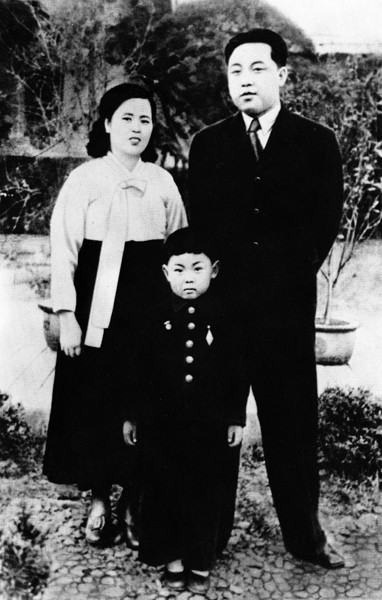
Korean Central News Agency / Korea News Service via AP Images
Undated
Kim Jong-Il takes part of a souvenir picture during his childhood with his parents, Kim Jong-suk, right, and leader Kim Il-sung.
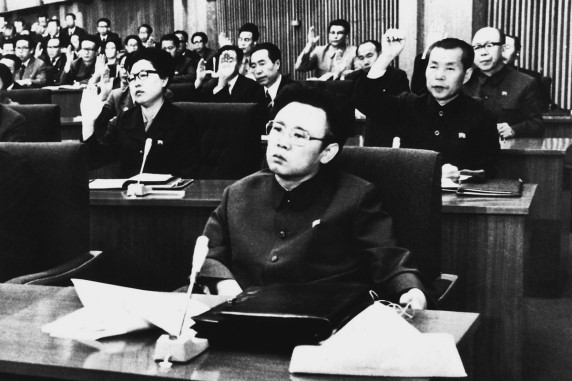
Korean Central News Agency / Korea News Service via AP Images
1980
Kim Jong-il attends at the first meeting of the Sixth Central Committee of North Korean Workers’ Party. He was named Politburo Presidium member and a member of the Central Military Commission at the meeting.
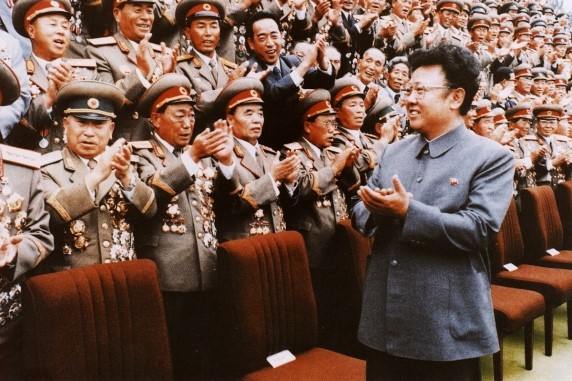
AFP / Getty Images
1988
Kim Jong-il meets with Korean People’s Army personnel.
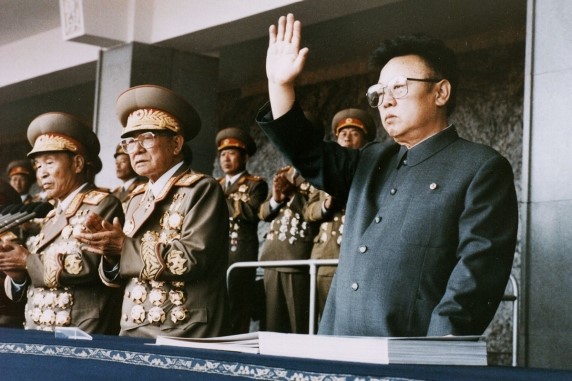
AFP / Getty Images
1999
Kim Jong-il waves to a military parade to celebrate the 50th anniversary of the founding of the Workers’ Party of Korea (WPK).

Getty Images
2000
South Korean President Kim Dae-jung and Kim Jong-il are all smiles as they raise their arms together at the signing ceremony of a joint agreement for cooperation between the two Koreas upon concluding the second day of summit meetings in Pyongyang, the North Korean capital.
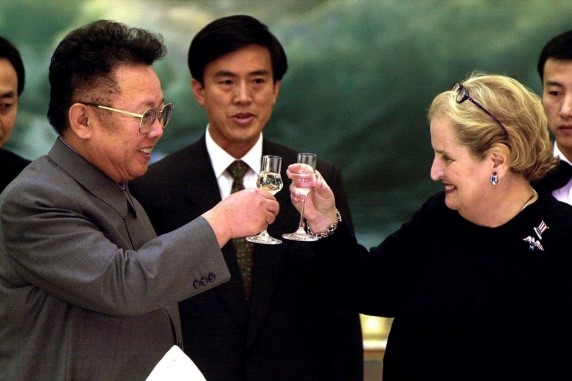
Chien-min Chung / AFP / Getty Images
2000
Kim Jong-il toasts U.S. Secretary of State Madeleine Albright in Pyongyang.
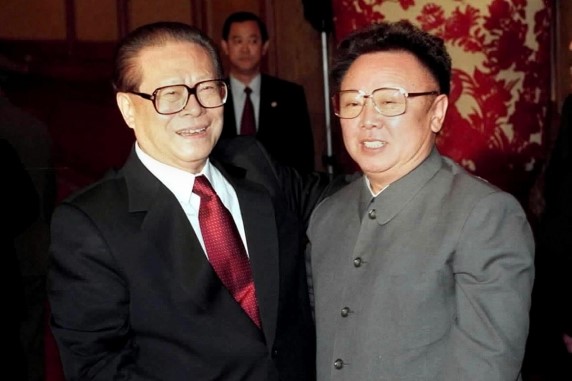
AFP / Getty Images
2001
Chinese President Jiang Zemin poses with Kim Jong-il in Beijing.
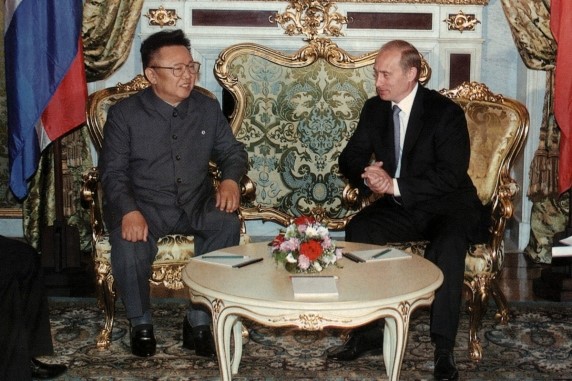
Korean Central News Agency / Korea News Service via AP Images
2001
Kim Jong-il has a conference with President Vladimir Putin in Moscow.
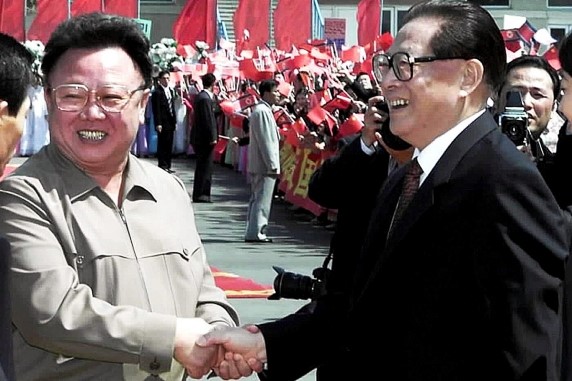
AFP / Getty Images
2001
Chinese President Jiang Zemin is greeted by Kim Jong-il at the Pyongyang airport.
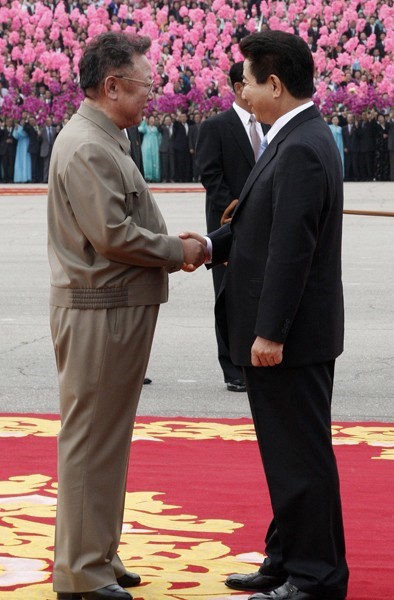
STR / AFP / Getty Images
2007
South Korea's President Roh Moo-hyun is greeted by Kim Jong-il during a welcoming ceremony in the capital Pyongyang. North and South Korea were proclaimed as separate nations in 1948, three years after the peninsula was divided between U.S. and Soviet zones of influence.
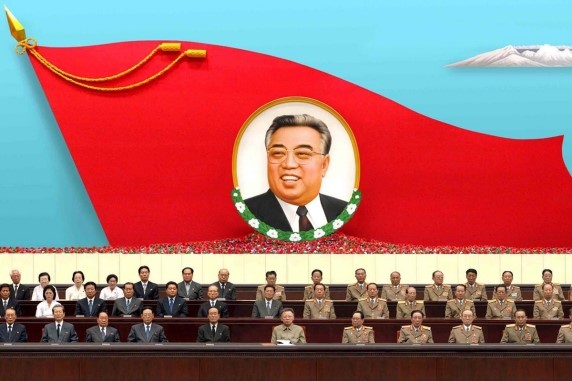
Korean Central News Agency via Korea News Service / AP Photo
2009
Kim Jong-il and high-ranking North Korean officials sit in front of a giant red flag with an image of his father, late Kim Il-sung during a gathering at an auditorium in Pyongyang to mark the 15th anniversary of the death of the country’s founder.
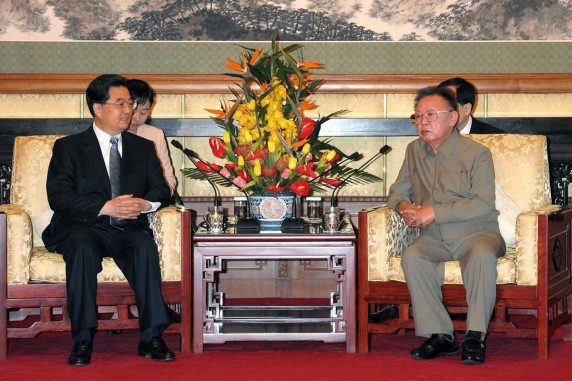
Korean Central News Agency via Korea News Service / AP Photo
2010
Kim talks with Chinese President Hu Jintao during his visit to China.
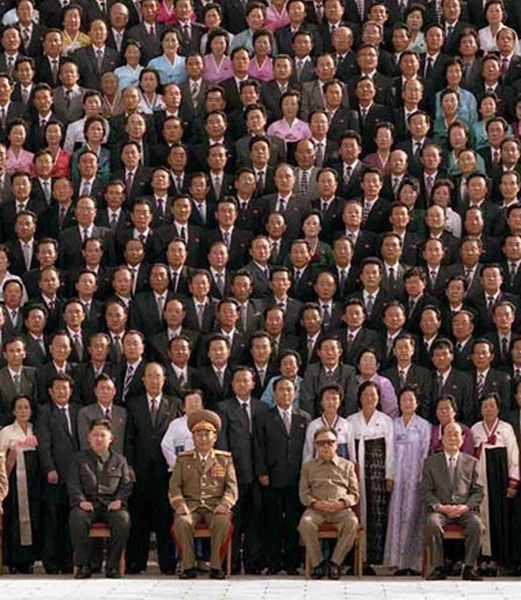
Korean Central News Agency via Korea News Service / AP Photo
2010
Kim Jong-il (front row, second from right) poses with senior officials of the Workers’ Party, including a man believed to be his third son, Jong-un (left), Vice Marshal Ri Yong-ho, and Kim Yong-nam (right), Kim Jong-il's long-serving No. 2, in Pyongyang.
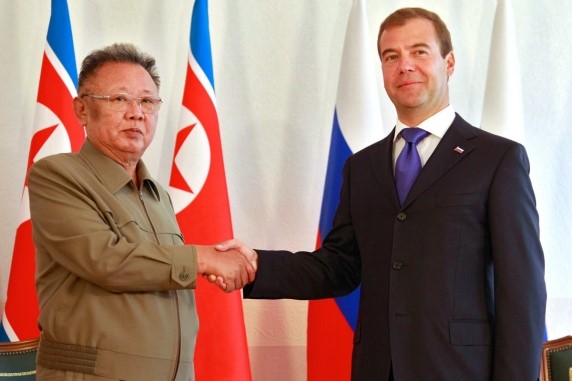
2011
Dmitry Astakhov / RIA Novosti / AP Photo
Russian President Dmitry Medvedev shakes hands with Kim Jong-il, at a military garrison outside the capital city of Ulan-Ude, Buryatia.
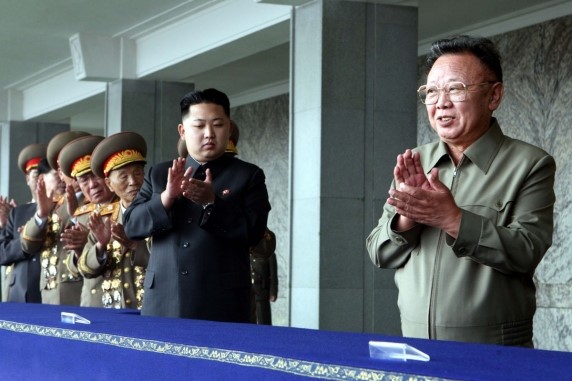
Son and Heir
Yao Dawei / Newscom
North Korean senior leader Kim Jong-il (right) with his son and heir, Kim Jong-un, in Pyongyang in October 2010.
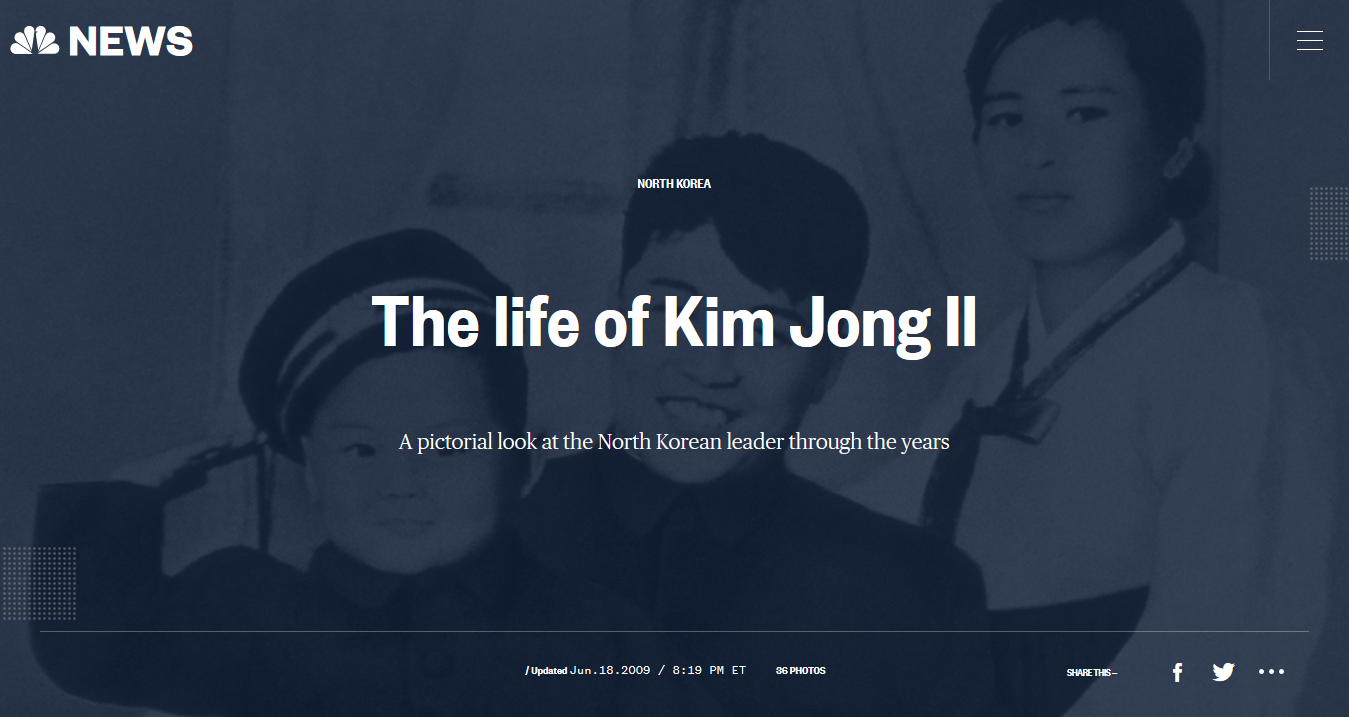
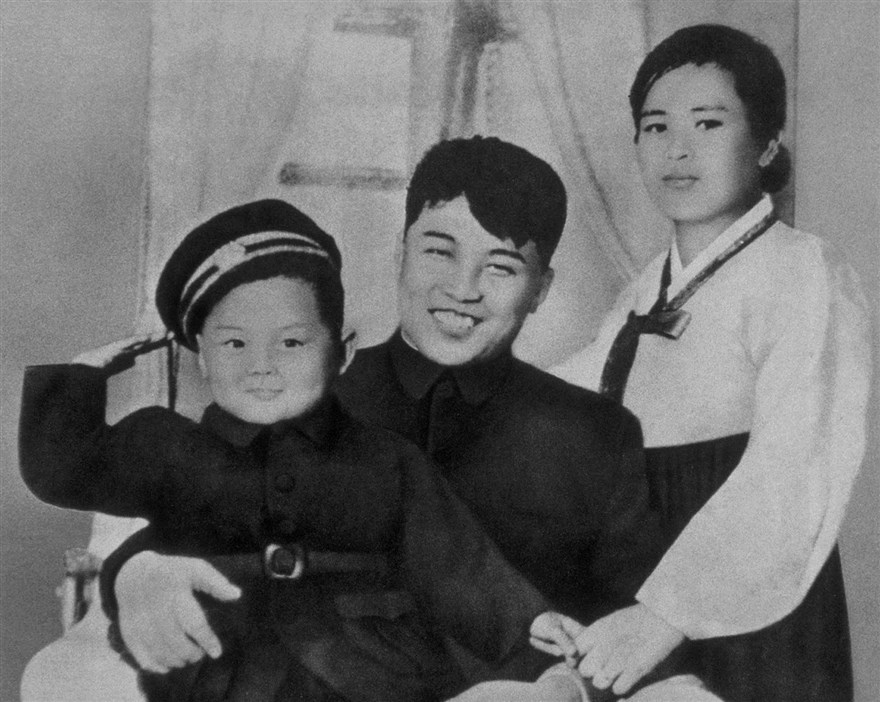
Happy family
ARCHIVES : KIM IL SUNG AND KIM JONG IL --- Image by © CORBIS SYGMA
Young student
In this October 1963 photo from North Korea's official Korean Central News Agency, distributed by Korea News Service, leader Kim Jong Il when he was a student of Kim Il Sung University in Pyongyang, North Korea. (Korean Central News Agency/Korea News Service via AP Images)
With his friends
In this undated photo from North Korea's official Korean Central News Agency, distributed by Korea News Service, leader Kim Jong Il (second person from right) takes part of a souvenir picture with his friends. (Korean Central News Agency/Korea News Service via AP Images)
— KCNA VIA KNS
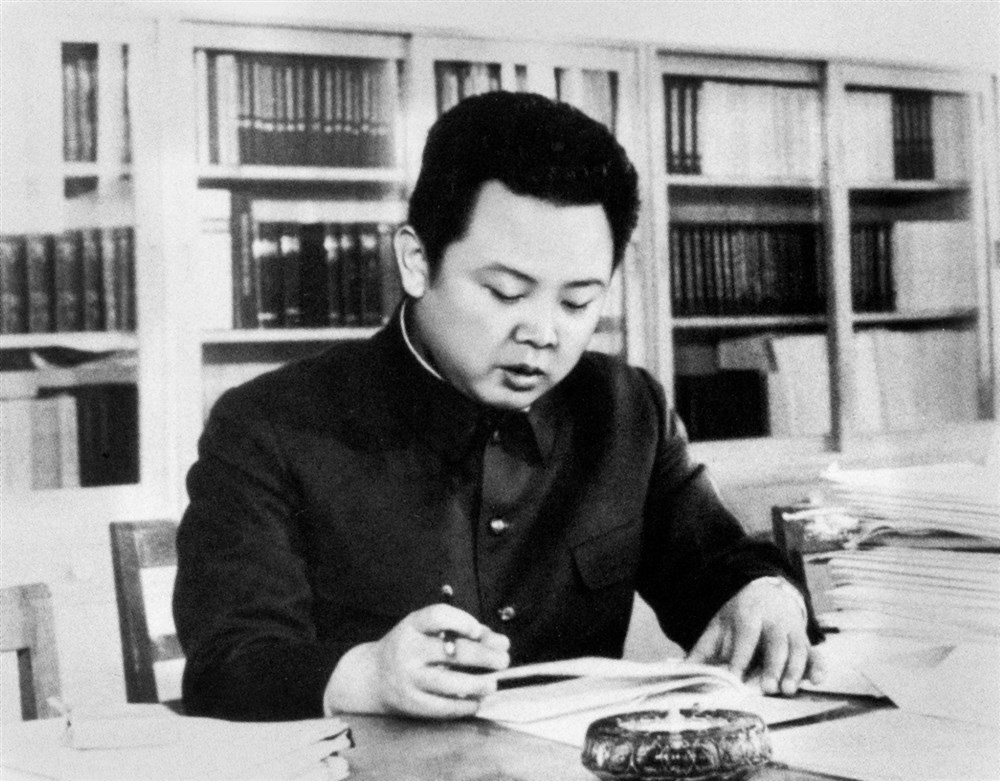
Official business
In this undated photo from North Korea's official Korean Central News Agency, distributed by Korea News Service, young days of leader Kim Jong Il as he works at the Central Committee of WPK (Worker's Party of Korea). (Korean Central News Agency/Korea News Service via AP Images)
— KCNA VIA KNS
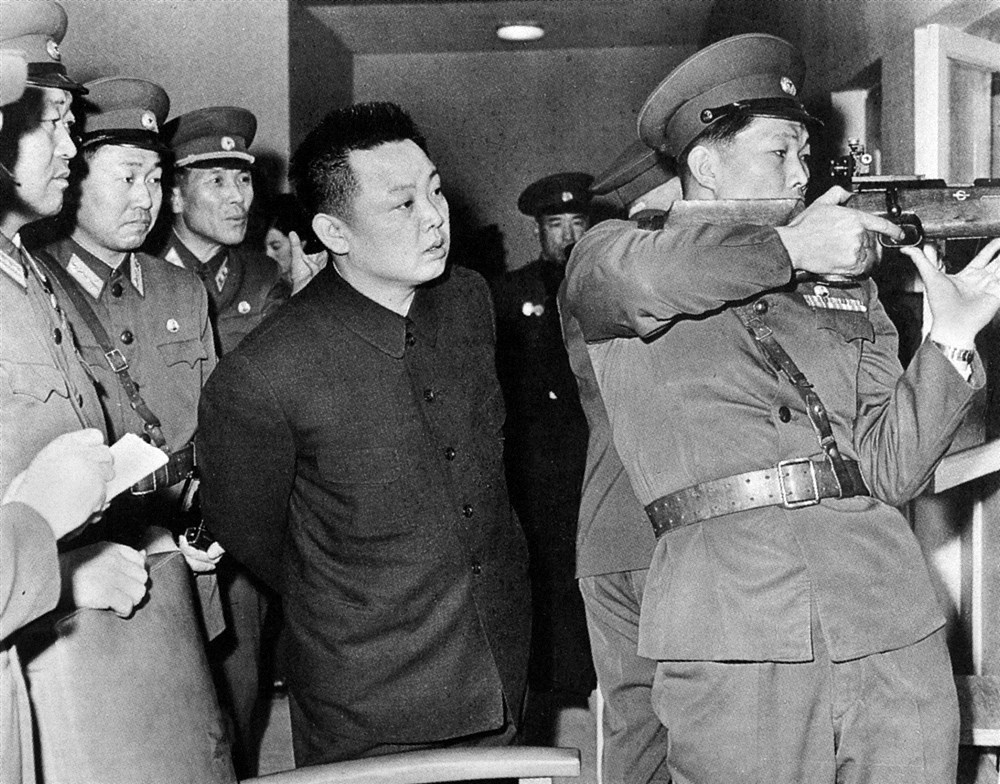
Training exercise
In this undated photo from North Korea's official Korean Central News Agency, distributed by Korea News Service, leader Kim Jong Il leads the firearms training of the February 2nd National Sport Defense team members when he was working at the Central Committee of WPK (Worker's Party of Korea). (Korean Central News Agency/Korea News Service via AP Images)
— KCNA VIA KNS
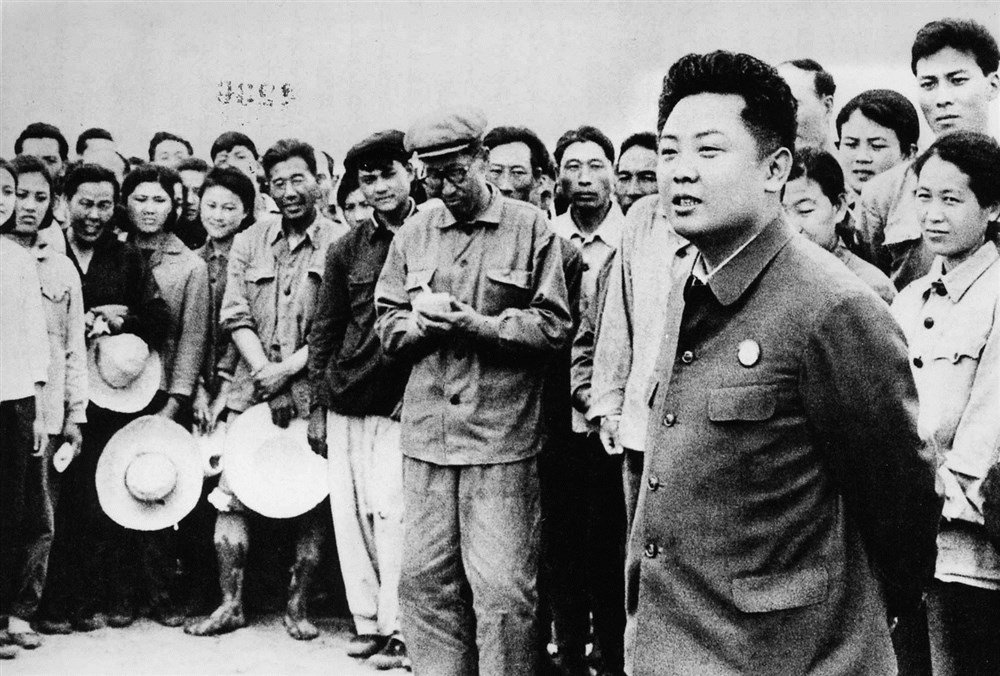
Meeting with farmers
In this May 21, 1971 photo from North Korea's official Korean Central News Agency, distributed by Korea News Service, leader Kim Jong Il talks with farmers when he was in the Central Committee. (Korean Central News Agency/Korea News Service via AP Images)
— Anonymous / KCNA VIA KNS
Test drive
— Anonymous / KCNA VIA KNS
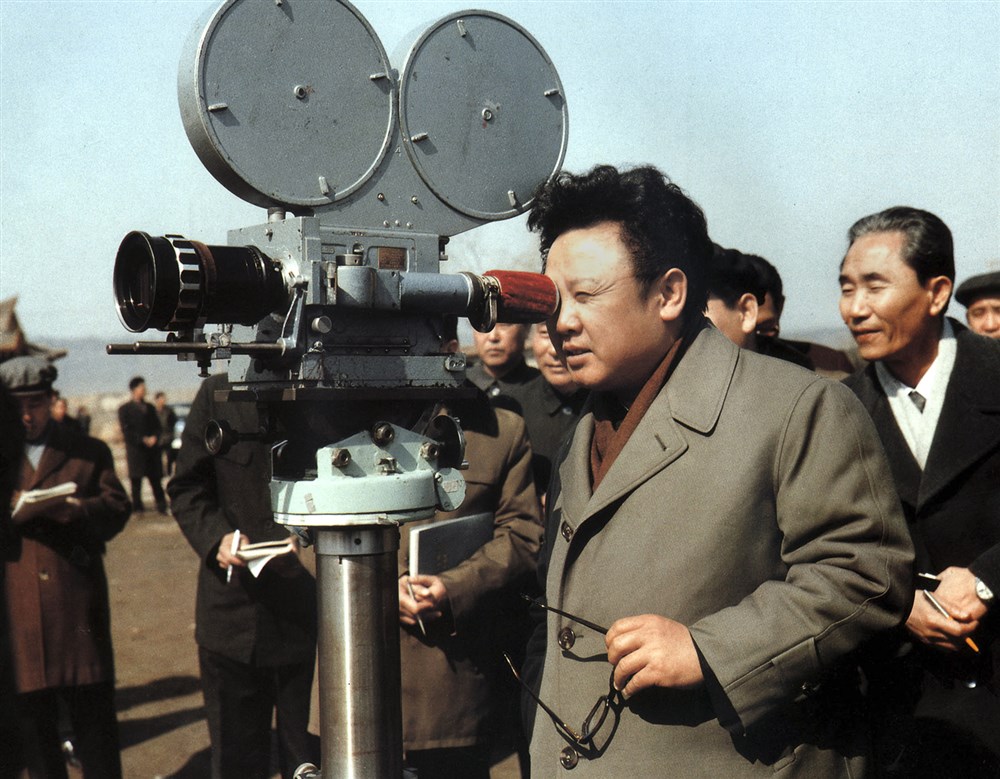
Filmmaking
In this March 1979 photo from North Korea's official Korean Central News Agency, distributed by Korea News Service, leader Kim Jong Il gives advice at the shooting of "An Jung Geun Avenges Hirobumi Ito," a narrative film. (Korean Central News Agency/Korea News Service via AP Images)
— Anonymous / KCNA VIA KNS
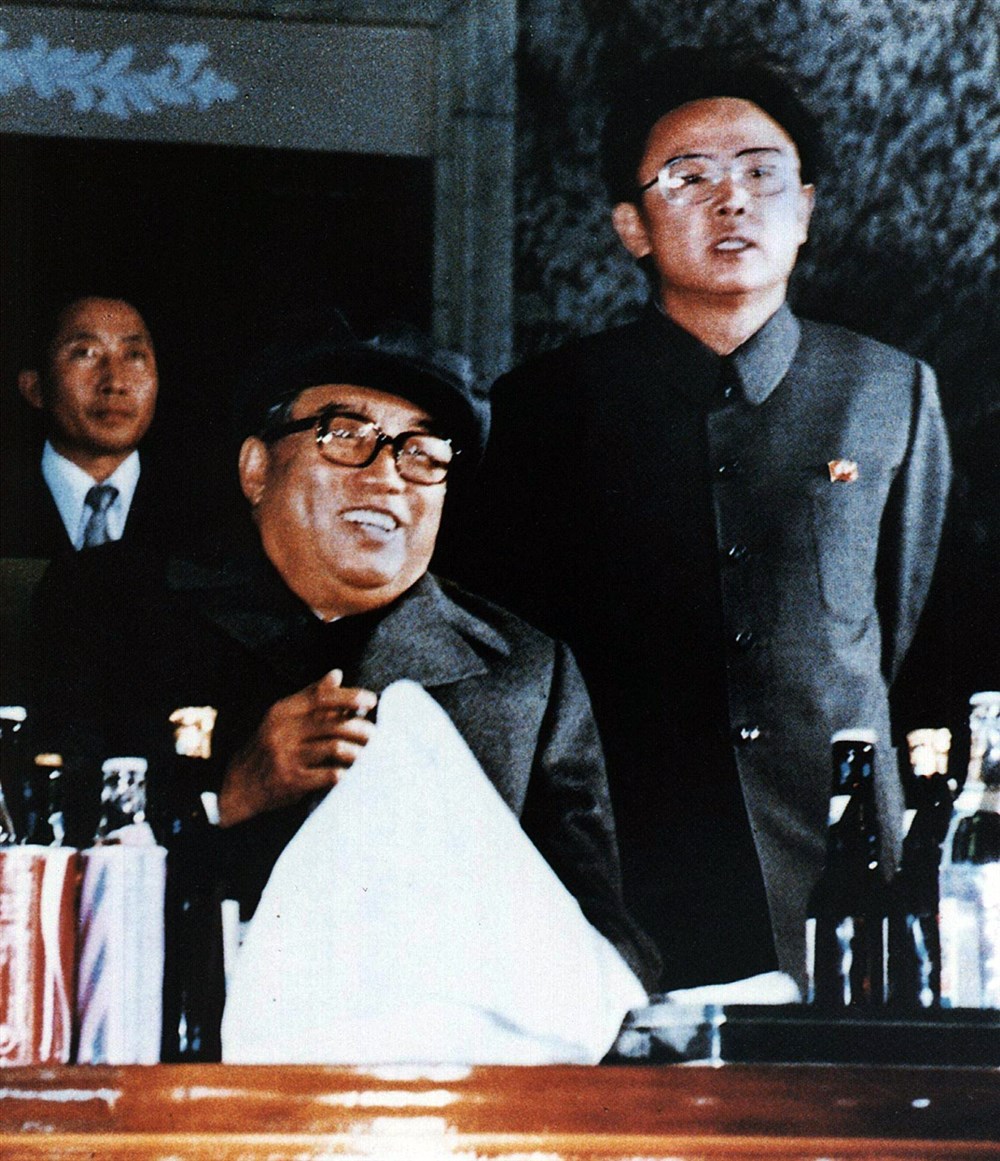
Father and son
NORTH KOREA:File photo released by the Korea News Service dated October 1980 shows North Korean leader Kim Jong-Il (R) and father Kim Il-Sung (front), attending an evening party to celebrate the 6th Korean Worker's Party convention. Kim Jong-Il was re-elected as head of the country's powerful National Defense Commission, Pyongyang Radio said 05 September, as CNN reported the title of president had been abolished in defense to Kim Il-Sung's father who died in 1994, leaving Kim Il-Sung as effective head of state. AFP PHOTO - KOREAN NEWS SERVICE (Photo credit should read AFP/Getty Images)
— - / AFP
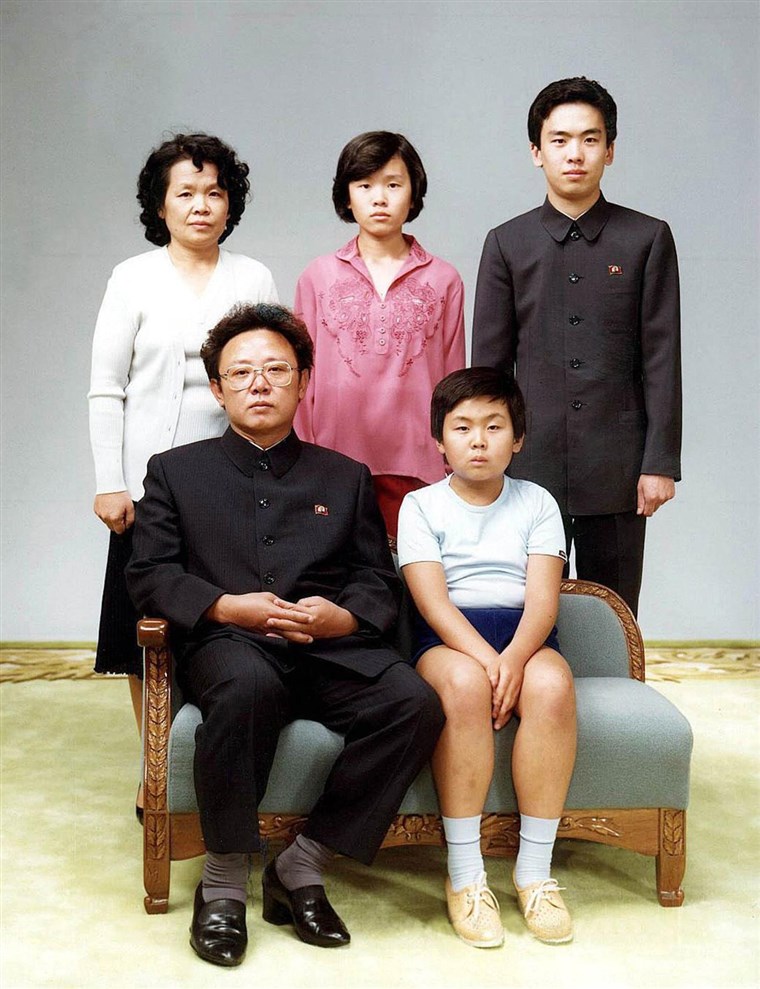
Family portrait
(FILES) This photo taken 19 August 1981 and recently released shows North Korean leader Kim Jong-Il (sitting-L) sitting with his son, Jong-Nam (sitting-R), Kim's sister-in-law Sung Hye-Rang (L-top), Sung's daughter Lee Nam-Ok (C-top) and son Lee Il-Nam (R-top). North Korean leader Kim Jong-Il died on December 17, 2011: Pyongyang's state TV said on December 19, 2011. KOREA OUT AFP PHOTO (Photo credit should read HO/AFP/Getty Images)
— Ho / AFP
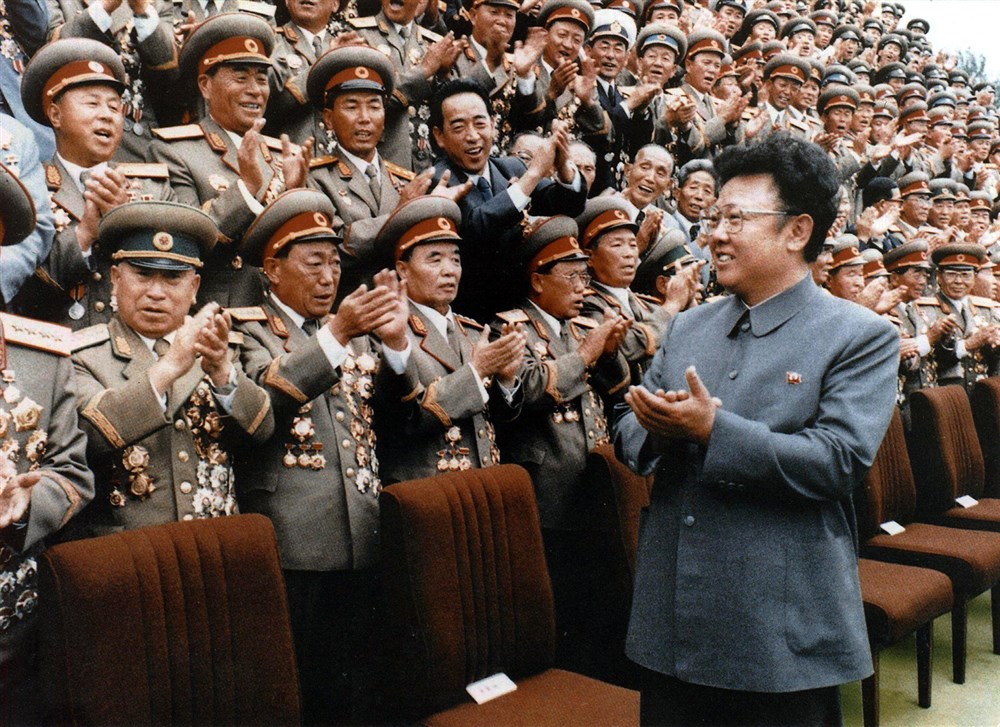
Applause please
(FILES) North Korean leader Kim Jong-Il meets with Korean People's Army personnel in this September 1988 file photo. North Korea said 07 January 2003 that the United States had embarked on a strategy of using sanctions to isolate Pyongyang and this represented a declaration of war. AFP PHOTO/KOREAN NEWS SERVICE
— - / FILES-KOREA NEWS SERVICE
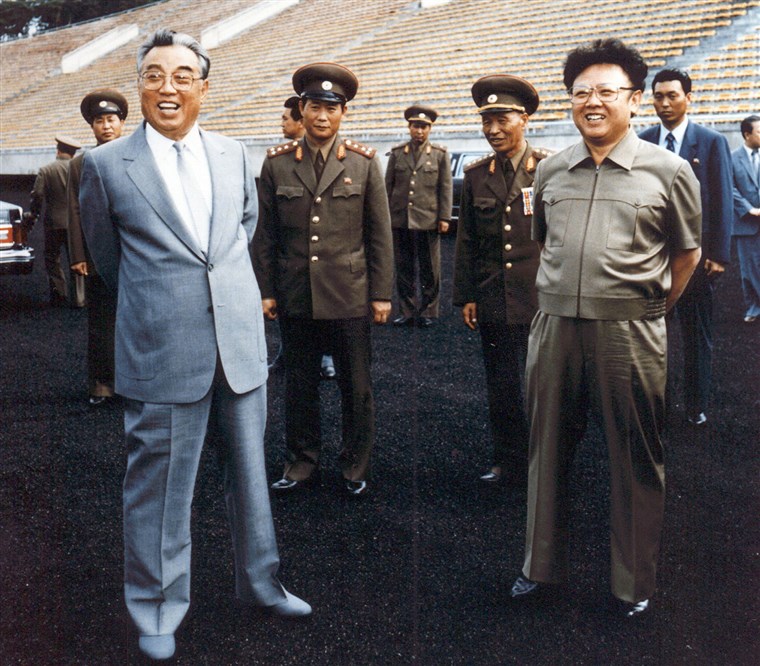
Like father, like son
HANDOUT RESTRICTED TO EDITORIAL USE AND EDITORIAL SALES - MANDATORY CREDIT "AFP PHOTO / HO / KCNA via KNS" (FILES) This file handout picture taken on an undisclosed date in 1992 and received from North Korea's official Korean Central News Agency via the Korean News Service shows the current North Korean leader Kim Jong-Il (R) and his father and then-leader, Kim Il-Sung (L), inspecting a football ground in Pyongyang. North Korean supremo Kim Jong-Il died on December 17, 2011 of a heart attack aged 69, state media announced on December 19, 2011 paving the way for a third generation of family leadership under his son Kim Jong-Un. AFP PHOTO / FILES / KCNA VIA KOREA NEWS SERVICE / HO (Photo credit should read KNS/AFP/Getty Images)
— Kns / AFP
Silent famine
RINSAN COUNTY, SOUTH KOREA - DECEMBER 18: Residents of Taziri wait for Red Cross food supplies in December 1995 in Taziri in the northern Rinsan county,North Korea. About 130,000 North Koreans are reportedly on the brink of famine and 500,000 have been left homeless following heavy rains. AFP PHOTO (Photo credit should read CALVI PARISETTI/AFP/Getty Images)
— Calvi Parisetti / AFP
Kim looking at things
(FILES) This undated photo released 24 June by Korea News Service and published by North Korean paper No Dong Ilbo shows North Korean leader Kim Jong-Il (2nd R) inspecting cucumbers harvested inside the 770th army base near Nyon Won power plant in Pyonan-Namdo. North Korean official media reported that Kim will mourn for his father for another year. North Korean leader Kim Jong-Il died on December 17, 2011: Pyongyang's state TV said on December 19, 2011. (B/W only) AFP PHOTO/KOREA NEWS SERVICE (Photo credit should read KOREA NEWS SERVICE/AFP/Getty Images)
— Korea News Service / AFP
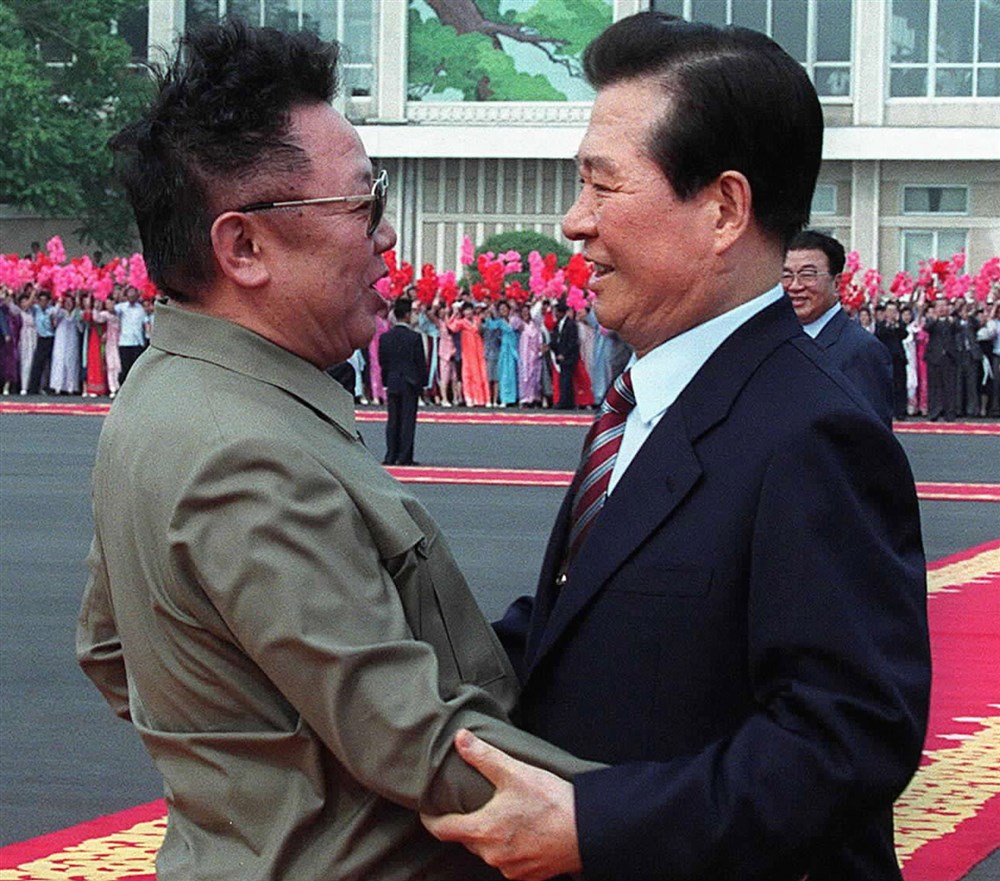
Frenemies?
370952 03: South Korean President Kim Dae-jung, right, hugs North Korean leader Kim Jong Il at the end of their summit meeting, June 15, 2000 at the airport in Pyongyang, North Korea. The two leaders held historic talks for three days in North Korea. (Photo by Newsmakers)
— Getty Images / Getty Images North America
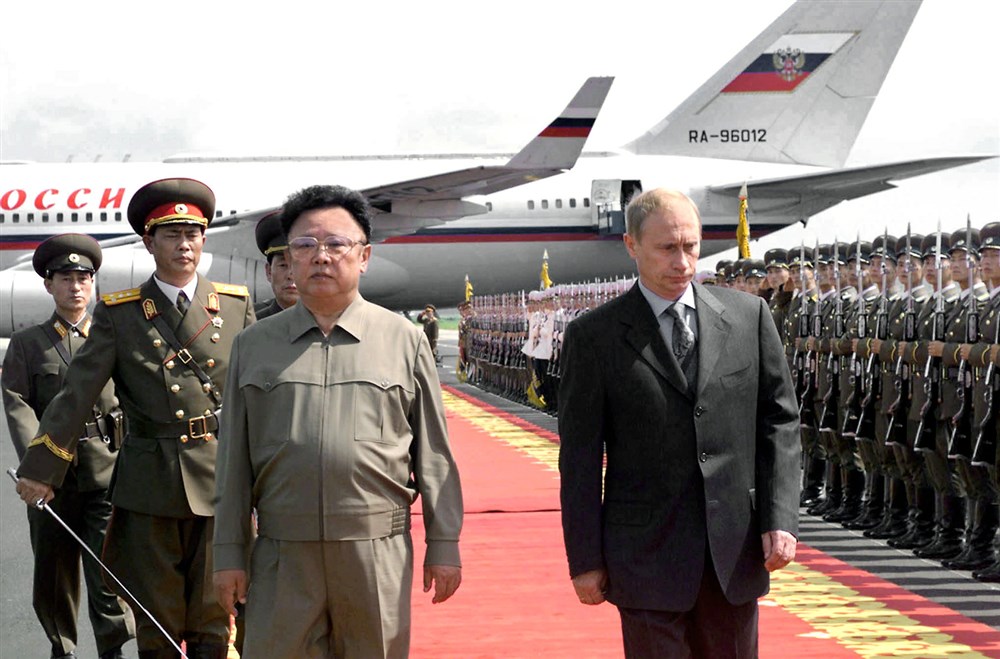
A visitor from Russia
PYONGYANG, NORTH KOREA: In this picture released 20 July 2000, Russian President Vladimir Putin (R) is welcomed by the leader of Democratic People's Republic of Korea Kim Jong Il (L) upon Putin's arrival in Pyongyang's airport, 19 July, 2000. Russian President Putin said after talks with North Korean leader Kim Jong II during a two-day visit in Pyongyang that North Korea has vowed to halt its missile development program in exchange for access to space rocket technology. (Photo credit should read ITAR-TASS/AFP/Getty Images)
— Itar-tass / AFP
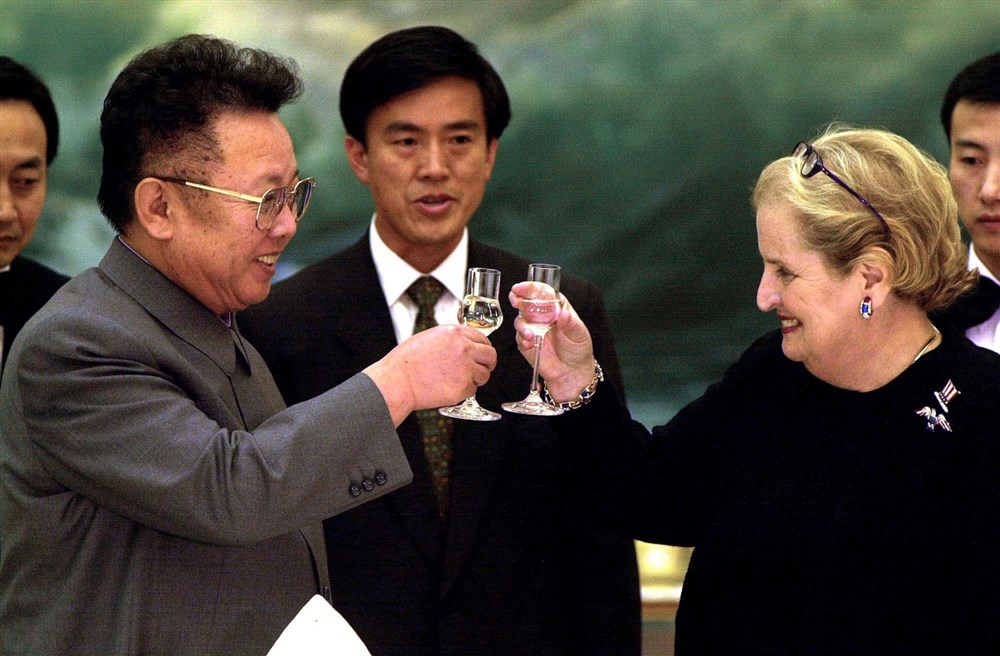
Toasting the U.S.
PYONGYANG, SOUTH KOREA - OCTOBER 24: North Korean leader Kim Jong Il (L) toasts US Secretary of State Madeleine Albright at a dinner in Pyongyang on 24 October 2000. The Albright visit is part of a coordinated strategy involving Washington and its allies, South Korea and Japan, to end the North's isolation and remove the threat of war in one of the world's most volatile regions. Other people unidentified. POOL/AFP PHOTO/Chien-min Chung (Photo credit should read CHIEN-MIN CHUNG/AFP/Getty Images)
A giant leader
PYONGYANG, NORTH KOREA: This picture dated 26 August 2002 shows a portrait of North Korean leader Kim Jong-Il displayed at an entrance of the foreign ministry in Pyongyang. In a move ending decades of Cold War hostility, Japanese Prime Minister Junichiro Koizumi is to make an unprecedented visit North Korea next month for talks with the Stalinist country's leader Kim Jong-Il, major Japanese media said 30 August 2002. Local agency said Koizumi would make a one-day visit to Pyongyang on 17 September. AFP PHOTO (Photo credit should read SHINGO ITO/AFP/Getty Images)
Welcoming Japan
Japanese Prime Minister Junichiro Koizumi (L) shakes hands with North Korean leader Kim Jong-Il (R) after signing a joint statement at the end of their historic one-day summit at the Paekhwa Won guesthouse in Pyongyang 17 September 2002. AFP PHOTO/POOL
— -- / JIJI PRESS
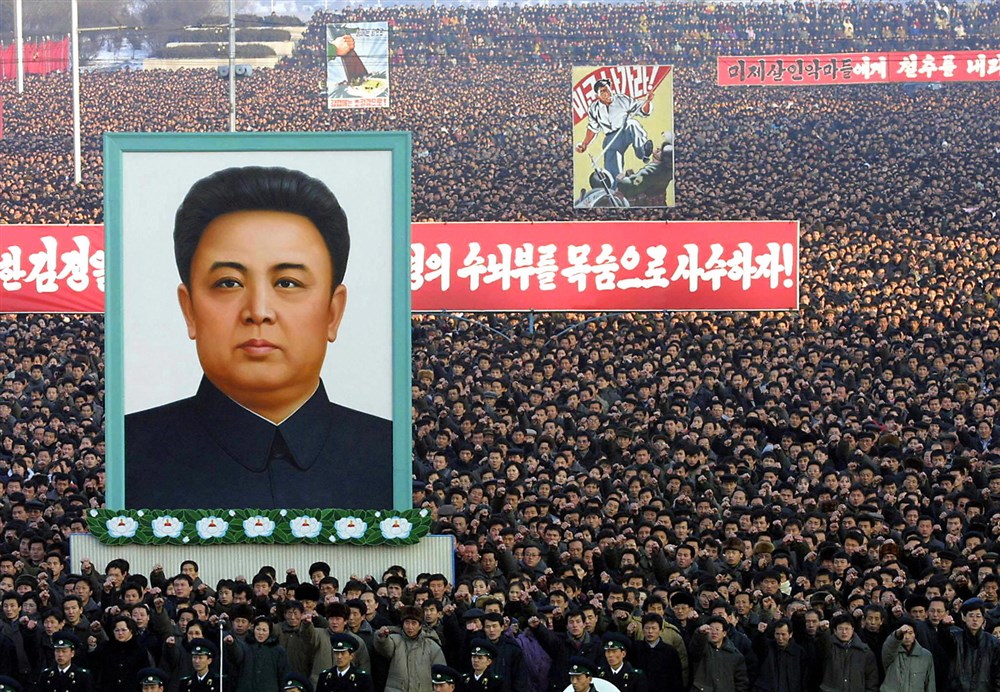
Crowds in the square
PYONGYANG, DEMOCRATIC PEOPLE'S REPUBLIC OF: TO GO WITH STORY "NKOREA-NUCLEAR-KIM" (FILES) This file photo dated 11 January 2003 shows more than one million people gathering on Kim Il Sung Square in Pyongyang to hear political leaders hail North Korea's dramatic decision to withdraw from the nuclear non-proliferation treaty (NPT). With six-party nuclear crisis talks opening in Beijing, 25 February 2004, the key to the puzzle at the talks lies with one man, Kim Jong-Il, the secretive leader of the world's most reclusive regime who is a "god-like figure to the people". AFP PHOTO/XINHUA/FILES (Photo credit should read AFP/AFP/Getty Images)
— Afp / AFP
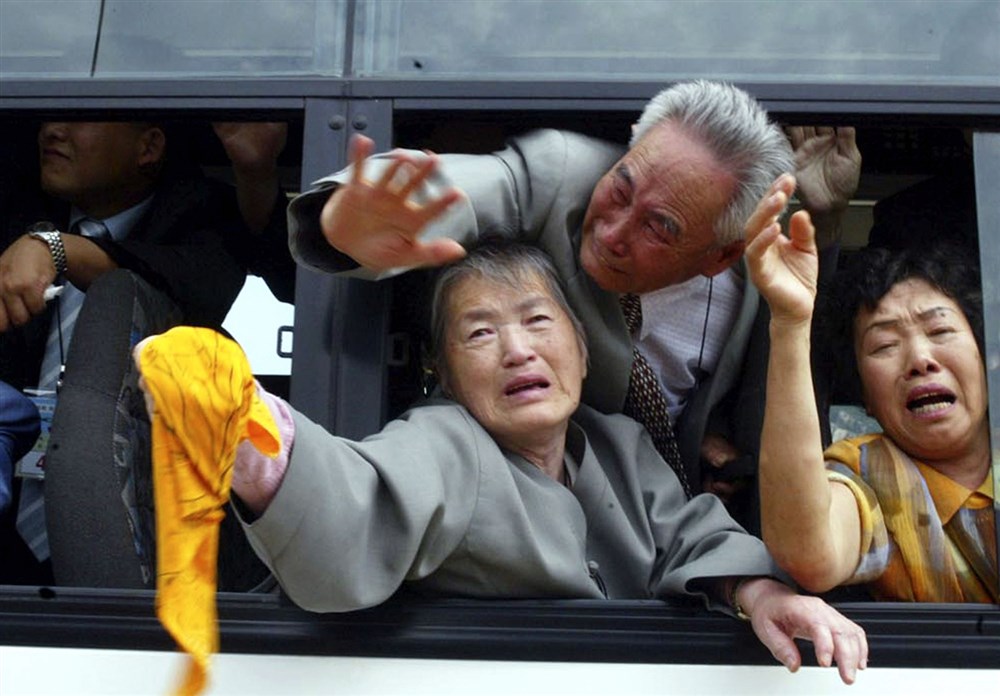
Tearful goodbyes
DIAMOND MOUNTAIN, NORTH KOREA - JULY 16: (SOUTH KOREA OUT) Emotional South Koreans bid farewell to their separated North Korean families following their reunion on July 16, 2004 in Diamond Mountain resort in North Korea. The families return home after a final hour-long meeting during the 10th reunion of the family members separated by the North South Korean border. (Photo by Pool/Getty Images)
— Pool / Getty Images AsiaPac
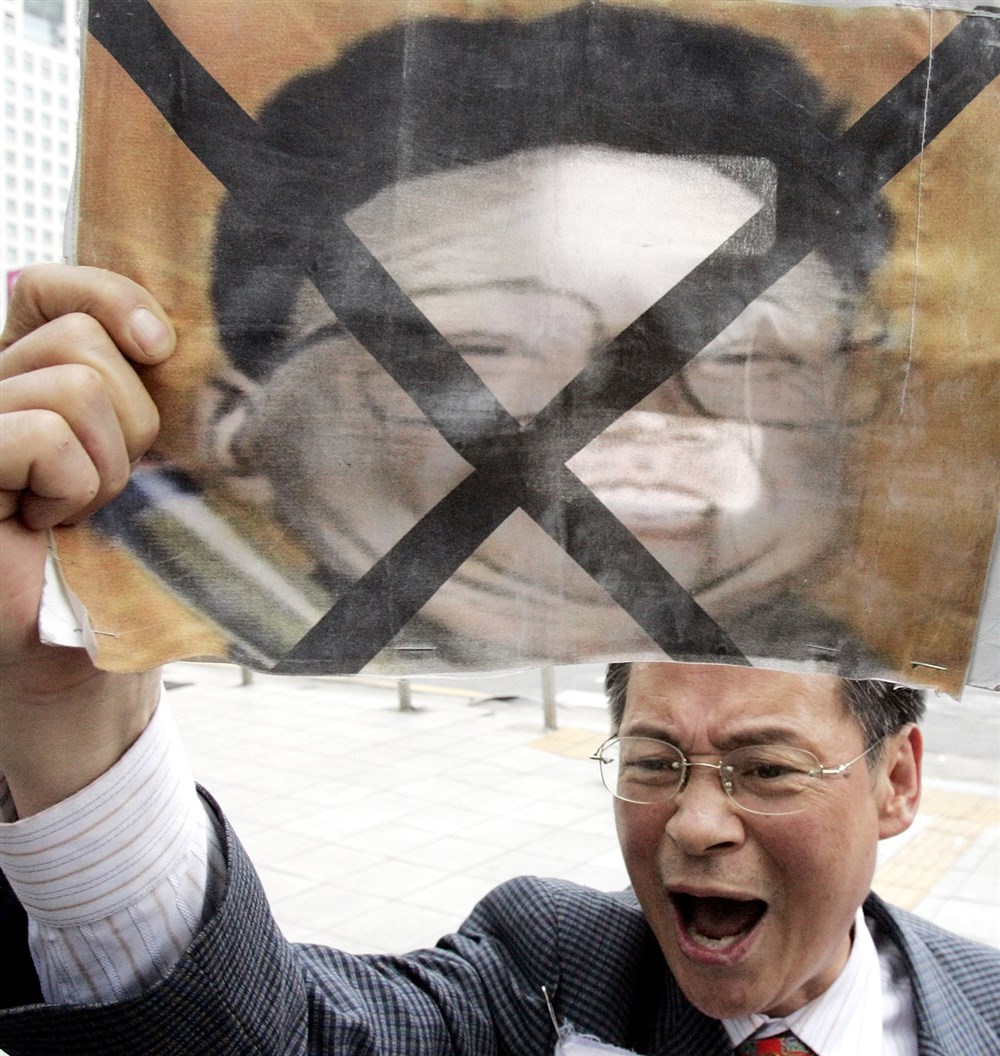
X marks the spot
A South Korean protester holds a picture of North Korean leader Kim Jong Il marked with a cross, denouncing the North's test-firing of seven missiles in Seoul, Friday, July 7, 2006. South Korea said Friday that it had turned down a North Korean proposal to hold military talks this week, citing tension over the North's test-firing of seven missiles. (AP Photo/ Lee Jin-man)
Wining and dining
South Korean President Roh Moo-hyun, left, smiles with North Korean leader Kim Jong Il at a farewell lunch in Pyongyang, North Korea, Thursday, Oct. 4, 2007. The leaders of North and South Korea signed a wide-ranging reconciliation pact Thursday pledging to finally seek a peace treaty to replace the 54-year-old cease-fire that ended the Korean War. (AP Photo/ Korea Pool via Yonhap) **KOREA OUT**
Military matters
North Korean leader Kim Jong-il (C) visits a military unit at an undisclosed location in North Korea in this recent picture released by KCNA on August 11, 2008. U.S. Secretary of State Condoleezza Rice told Japan that Washington would not remove North Korea from a U.S. list of state sponsors of terrorism on the initial deadline of Monday, Japanese Foreign Minister Masahiko Komura said. REUTERS/KCNA (NORTH KOREA) NO COMMERCIAL SALES. NO THIRD PARTY SALES. NOT FOR USE BY REUTERS THIRD PARTY DISTRIBUTORS.
— Kcna / X02538
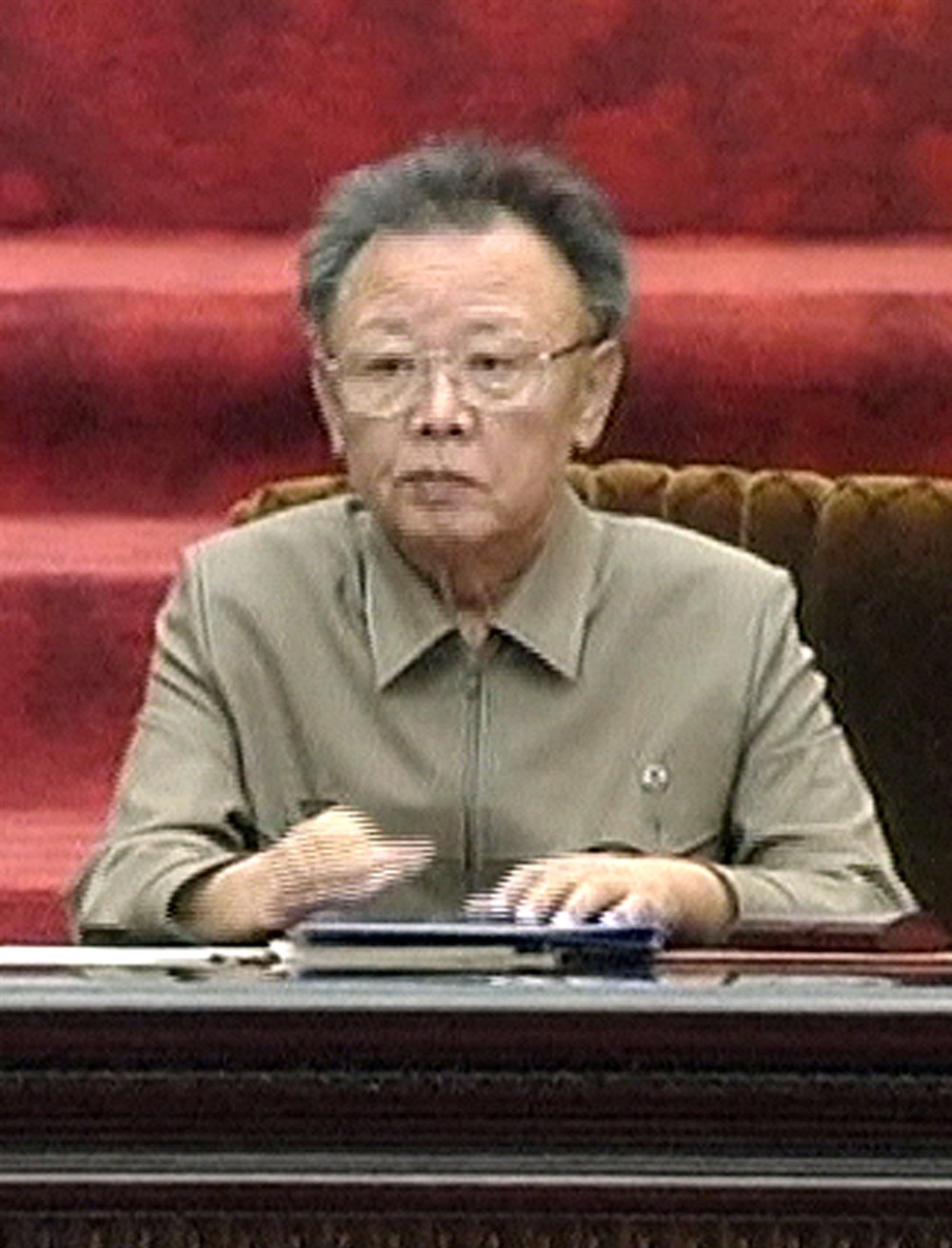
In the public eye again
FILE - In this file image made off KRT footage distributed by APTN, North Korean leader Kim Jong II attends the first session of Supreme People's Assembly of the country on April 9, 2009 in Pyongyang, North Korea. (AP Photo/KRT via APTN, File) ** NORTH KOREA OUT, TV OUT **
— KRT via APTN
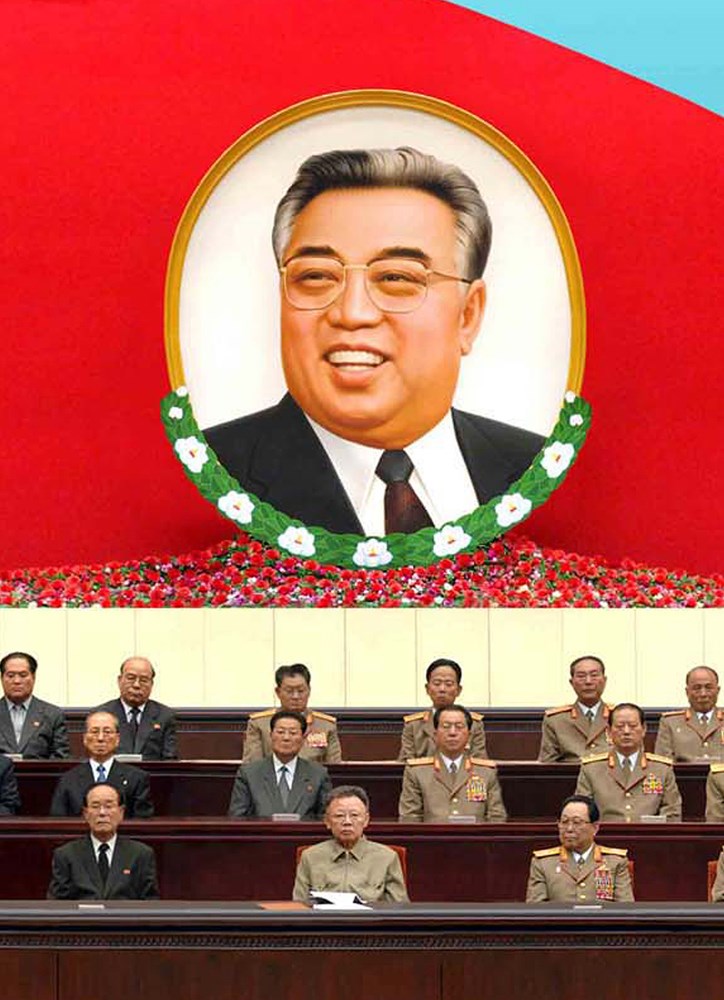
Paying his respects
** ALTERNATIVE CROP OF TOK809 ** In this Korean Central News Agency photo taken on Wednesday, July 8, 2009 and distributed by Korea News Service in Tokyo, North Korea leader Kim Jong Il, center in the front row, and high ranking North Korean officials sit in front of a giant red flag with an image of his father late Kim Il Sung during a gathering at an auditorium in the capital Pyongyang to mark the 15th anniversary of the death of the country's late founder. (AP Photo/Korean Central News Agency via Korea News Service) ** JAPAN OUT **

Visit from Clinton
In this photo released by Korean Central News Agency via Korea News Service in Tokyo, former U.S. President Bill Clinton, right, meets with North Korean Leader Kim Jong Il, left, front, in Pyonggyang, North Korea,Tuesday, Aug. 4, 2009. Others are unidentified. Former US resident Bill Clinton met Tuesday with North Korean leader Kim Jong Il on the first day of a surprise visit to Pyongyang, holding "exhaustive" talks that covered a wide range of topics, state-run media said.(AP Photo/Korean Central News Agency via Korea News Service) ** JAPAN OUT **
— Korean Central News Agency via K
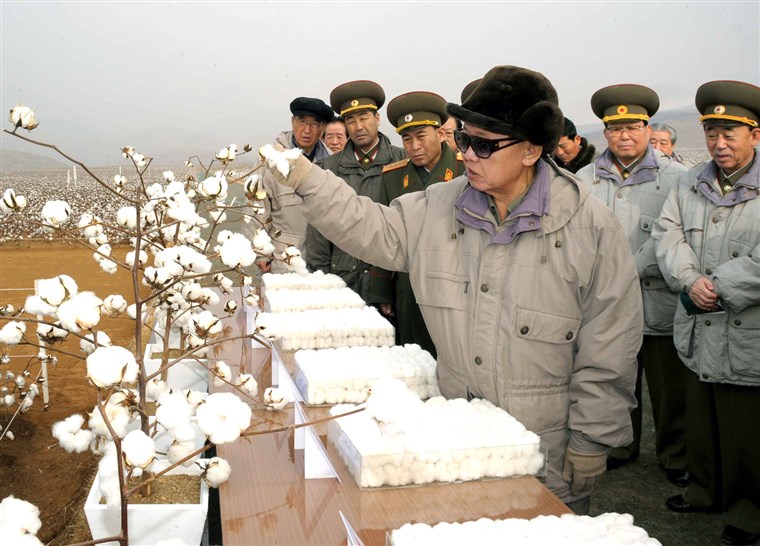
Calling on a cotton farm
North Korean leader Kim Jong-il (front) inspects a cotton plant farm of the Korean People's Army's 1596 unit in an undisclosed place in North Korea in this picture released by North Korea's official KCNA news agency November 29, 2009. KCNA did not state expressly the date when the picture was taken. REUTERS/KCNA (NORTH KOREA POLITICS) QUALITY FROM SOURCE. NO THIRD PARTY SALES. NOT FOR USE BY REUTERS THIRD PARTY DISTRIBUTORS
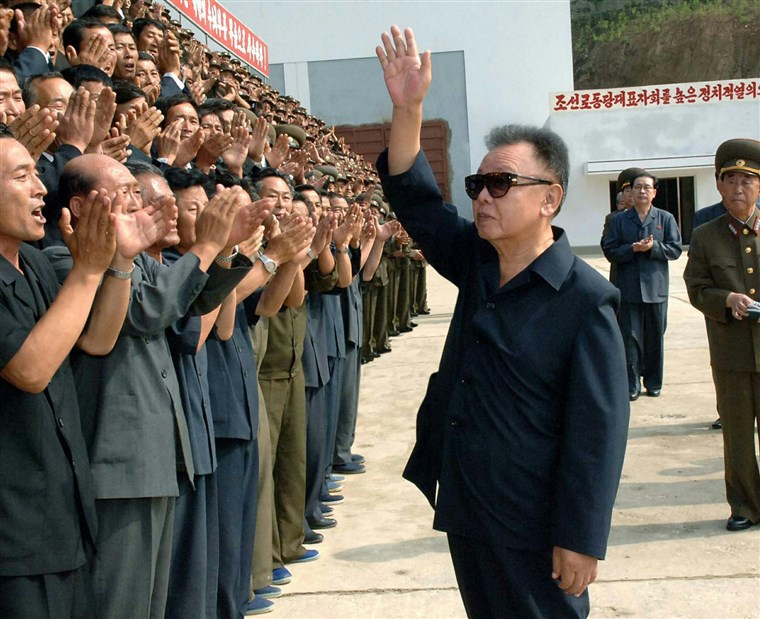
Meet-and-greet
(FILES) An undated picture released by North Korea's Central News Agency on August 4 and distributed by Tokyo's Korean News Service on August 5, 2010 shows North Korean leader Kim Jong-Il (R) waving as people including soldiers applaud during a visit to the construction site of the Kumyagang Army-People Power Station in South Hamgyong Province. The US government on August 31, 2010 slapped sanctions on four people and eight organizations accused of aiding North Korea's government through illicit trade, the Treasury Department said. HANDOUT RESTRICTED TO EDITORIAL USE AND EDITORIAL SALES - MANDATORY CREDIT "AFP PHOTO / KCNA via KNS" (Photo credit should read KNS/AFP/Getty Images)
— Kns / AFP
China visit
FILE - In this Aug. 27, 2010 file photo released by China's official Xinhua news agency, Chinese President Hu Jintao, right, meets with North Korean leader Kim Jong Il in Changchun, in northeast China's Jilin province. North Korea will hold its biggest political meeting in 30 years next week, state media reported Tuesday, Sept. 21, 2010, as observers watched for signs that the secretive regime's aging leader has chosen his son to succeed him. (AP Photo/Xinhua, Ju Peng, File) NO SALES
— Ju Peng / Xinhua
Likely heir
North Korea's leader Kim Jong-il (seated 3rd L) sits with his youngest son Kim Jong-un (seated L) and younger sister Kim Kyong-hui (seated R) and newly elected members of the central leadership body of the Workers' Party of Korea (WPK) and the participants in the WPK Conference, at the plaza of the Kumsusan Memorial Palace in Pyongyang in this picture released by the North's KCNA news agency September 30, 2010. North Korean state media released a photograph on Thursday of the reclusive state's leader-in-waiting Kim Jong-un. North Korean leader Kim Jong-il anointed his youngest son as successor this week, promoting him to senior political and military positions. REUTERS/KCNA (NORTH KOREA - Tags: MILITARY POLITICS) NO THIRD PARTY SALES. NOT FOR USE BY REUTERS THIRD PARTY DISTRIBUTORS
— Kcna / X02538
North Korean leader Kim Jong-il (2nd L) and his youngest son Kim Jong-un (3rd R from Kim Jong-il) visit the cemetery for Chinese soldiers who died during the 1950-53 Korean War in Hoechang County, North Korea, October 26, 2010, in this picture released by North Korea's official KCNA news agency. REUTERS/KCNA (NORTH KOREA - Tags: MILITARY POLITICS) NO THIRD PARTY SALES. NOT FOR USE BY REUTERS THIRD PARTY DISTRIBUTORS
— Kcna / X02538
FILE - In this Oct. 10, 2010 file photo, North Korea leader Kim Jong Il, right, and his son Kim Jong Un attend a massive military parade to mark the 65th anniversary of the communist nation's ruling Workers' Party in Pyongyang, North Korea. Kim Jong Il, North Korea's mercurial and enigmatic leader whose iron rule and nuclear ambitions dominated world security fears for more than a decade, has died. He was 69. (AP Photo/Vincent Yu, File)
— Vincent Yu / AP
Pass in review
--- EDITORS NOTE -- RESTRICTED TO EDITORIAL USE - MANDATORY CREDIT " AFP PHOTO / KCNA via KNS " - NO MARKETING NO ADVERTISING CAMPAIGNS - DISTRIBUTED AS A SERVICE TO CLIENTS (FILES) This picture released by North Korea's official Korean Central News Agency on September 10, 2011 via the Tokyo-based Korean News Service (KNS) shows North Korean leader Kim Jong-Il at a military parade to celebrate the 63rd founding anniversary of the Democratic People's Republic of Korea in Pyongyang on September 9, 2011. North North Korean leader Kim Jong-Il has died aged 69 of a heart attack, state media announced on December 19, 2011, plunging the impoverished but nuclear-armed nation into uncertainty amid a second dynastic succession. AFP PHOTO / KCNA via KNS (Photo credit should read KCNA VIA KNS/AFP/Getty Images)
— Kcna Via Kns / AFP
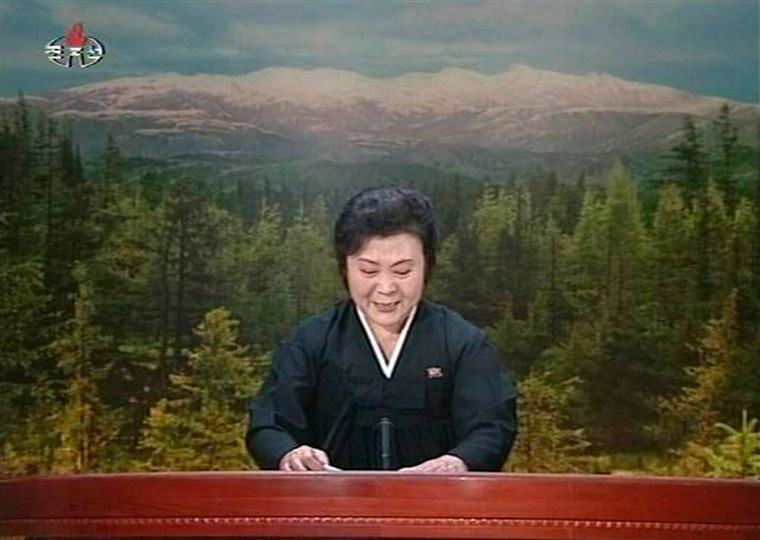
A tearful announcer dressed in black announces the death of North Korean leader Kim Jong-il on North Korean State Television in this still image from video December 19, 2011. North Korean leader Kim Jong-il died on a train trip, state television reported on Monday, sparking immediate concern over who is in control of the reclusive state and its nuclear programme. The announcer dressed in black said the 69-year old had died on Saturday of physical and mental over-work on his way to give "field guidance". REUTERS/KRT via Reuters TV (NORTH KOREA - Tags: OBITUARY POLITICS TPX IMAGES OF THE DAY) FOR EDITORIAL USE ONLY. NOT FOR SALE FOR MARKETING OR ADVERTISING CAMPAIGNS. NORTH KOREA OUT
— Krt / X00514
epa03039607 The body of North Korean leader Kim Jong Il is seen inside the bier as people pay their respects, Pyongyang, North Korea, 20 December 2011. North Korean state television announced 19 december that DPRK leader Kim Jong Il had died from a heart attack while traveling on his train on 17 December. According to state media, the funeral for the 'Dear Leader' as most North Koreans called him, will be held on 28 December. He was aged 69 as stated in his biography. EPA/KCNA
— Kcna / KCNA


 字體:小 中 大
字體:小 中 大



















